Locating and accessing workplace health and safety (WHS) information relevant to your own work role in an animal care setting is of paramount importance for several reasons:
- Personal Safety: Understanding and following WHS guidelines and procedures helps protect your physical well-being. Working with animals, especially large or potentially unpredictable ones, can pose risks. Accessing relevant WHS information ensures you are aware of potential dangers and how to mitigate them, reducing the likelihood of workplace injuries.
- Animal Welfare: Proper WHS practices often coincide with the humane and ethical treatment of animals. When you know how to handle animals safely, it reduces stress for them and minimises the risk of causing harm, which is crucial for their overall welfare.
- Reducing Liability: Accessing and adhering to WHS information can help protect both you and your employer from liability in the event of accidents or injuries. Demonstrating that you followed established safety procedures can be crucial in legal proceedings.
- Preventing Accidents: WHS information often includes accident prevention strategies and best practices. By following these guidelines, you can significantly reduce the likelihood of workplace accidents, which can disrupt operations and lead to costly consequences.
Examples of Workplace Health and Safety (WHS) Information
Let’s see some examples of workplace health and safety information that you will need to be familiar with as part of your role in an animal care setting:
- WHS Policies and Procedures: Familiarity with the organisation's WHS policies and procedures, including how to access and reference them and knowing where they are posted or stored.
- Risk Assessment Documentation: Understanding the process for conducting risk assessments, including basic hazard identification procedures that explain how to identify potential hazards in the workplace, assess their severity, and implement controls to mitigate risks.
- Emergency Response Plans: Knowledge of emergency response plans, including evacuation procedures, first aid protocols, and how to use fire extinguishers or emergency equipment. It is also important to ensure that relevant personnel are informed in an emergency, i.e., the practice manager in a vet surgery.
- Personal Protective Equipment (PPE): Information on the types of PPE required for specific tasks or when working with certain animals, along with guidance on how to properly use, maintain, and store PPE. There is also equipment that can be used on animals to ensure safe handling, such as a muzzle or a harness.
- Chemical Safety Data Sheets (SDS): Access to Safety Data Sheets (SDS) for chemicals or substances used in the workplace, with details on proper handling, storage, and disposal.
- Training Records: Keeping records of WHS training and ensuring that employees receive appropriate training on topics such as animal handling, chemical safety, and emergency response.
- Incident Reporting Procedures: Knowing how to report accidents, near misses, and incidents, as well as the process for investigating and documenting these occurrences.
- Safety Committees or Meetings: Information on how WHS matters are discussed, addressed, and documented in safety committee meetings or regular team meetings.
- Incident Investigation Process: Knowing how incidents are investigated, documented, and reviewed to prevent future occurrences and improve safety measures.
- Training and Communication Strategies: Understanding how WHS information is communicated to employees, including the use of posters, training materials, safety bulletins, and toolbox talks.
- Record-Keeping: Properly maintaining records related to WHS compliance, including incident reports, training records, and inspection checklists.
- Consultation and Employee Involvement: Encouraging and facilitating employee involvement in WHS matters, as well as seeking their feedback and suggestions for improving safety practices.
Examples of Work Health and Safety (WHS) Policies and Procedures
While specific policies and procedures can vary depending on the nature of the facility and the animals being cared for, here are some common examples of WHS policies and procedures relevant to animal care settings:
- Animal Handling and Restraint Policy: This policy outlines safe practices for handling and restraining animals to prevent injuries to both animals and staff. It should include guidelines for using appropriate techniques, equipment, and protective gear.
- Personal Protective Equipment (PPE) Policy: This policy specifies the types of PPE required for different tasks in the facility, such as gloves, safety glasses, aprons, or respiratory protection. It also outlines the proper use, maintenance, and disposal of PPE.
- Infection Control and Biosecurity Procedures: Procedures for preventing the spread of diseases among animals and from animals to humans. This includes protocols for cleaning and disinfecting equipment, isolation areas for sick animals, and monitoring health status.
- Manual Handling Policy: This policy addresses safe manual handling practices to reduce the risk of musculoskeletal injuries. It includes guidelines for lifting, carrying, and moving animals or heavy objects.
- Chemical Safety Policy: A policy outlining safe procedures for handling, storing, and disposing of chemicals used in animal care, such as cleaning agents, disinfectants, and pesticides. It should include requirements for maintaining Safety Data Sheets (SDS).
- Emergency Response and Evacuation Plan: Procedures for responding to emergencies, such as fires, floods, or animal escapes. This plan should include evacuation routes, designated assembly areas, and responsibilities during emergencies.
- First Aid and Injury Reporting Procedures: Procedures for providing first aid to injured staff or animals. This also includes guidelines for reporting workplace injuries and near-misses, as required by WHS regulations.
- Animal Welfare Policy: A policy outlining the commitment to high standards of animal welfare. It should address issues such as appropriate nutrition, housing, and enrichment for animals in care.
- Visitor Safety Policy: Guidelines for ensuring the safety of visitors, clients, or volunteers in the animal care facility. This may include rules for visitor access to animal areas and safety instructions.
- Risk Assessment and Hazard Identification Procedures: Procedures for regularly assessing and identifying workplace hazards. This includes documenting identified hazards and implementing control measures to mitigate risks.
- Training and Induction Program: A program outlining the training requirements for all staff and volunteers, including WHS training, animal handling training, and emergency response training.
- Equipment Maintenance and Inspection Procedures: Procedures for the regular inspection and maintenance of equipment used in animal care, such as enclosures, fencing, and medical equipment.
- Visitor and Staff Hygiene Procedures: Guidelines for maintaining personal hygiene and cleanliness to prevent the spread of diseases between animals, staff, and visitors.
These are general examples of WHS policies and procedures commonly found in animal care settings.
Planning work with strict adherence to workplace health and safety legislation and relevant industry standards is essential. Animal care environments often involve unique risks, such as handling unpredictable animals, working with potentially hazardous chemicals, and maintaining specialised equipment. Compliance with health and safety regulations ensures legal accountability, helping to prevent legal penalties and reputational damage. Equally significant is the welfare of both the animals and humans. Proper planning that follows safety guidelines reduces the likelihood of accidents and injuries to both animal caregivers and the animals themselves. This not only upholds ethical principles but also safeguards the reputation of the animal care organisation, assuring clients and donors of responsible and humane care.
Furthermore, planning work in accordance with codes of practice and the organisation's policies and procedures in the animal care sector promotes efficiency and quality assurance. Consistent adherence to industry standards ensures that animal care practices meet established benchmarks, minimising the risk of errors and inconsistencies in the treatment and care of animals. It also enables organisations to optimise workflows, reduce disruptions, and enhance the overall quality of care provided. By integrating safety measures into daily work routines, animal care facilities create a safer and more productive environment for employees and a more secure and comfortable setting for the animals under their care. Ultimately, this approach not only meets regulatory requirements but also fosters a culture of safety and excellence in animal care.
WHS Legislation
| Federal Legislation |
|---|
| Work Health and Safety Act 2011 (legislation.gov.au) |
| State/Territory | Legislation |
|---|---|
| New South Wales (NSW) | Work Health and Safety Act 2011 No 10 - NSW Legislation |
| Victoria | Occupational Health and Safety Act 2004 (legislation.vic.gov.au) |
| Queensland | Work Health and Safety Act 2011 - Queensland Legislation - Queensland Government |
| South Australia (SA) | Work Health and Safety Act 2012 (legislation.sa.gov.au) |
| Western Australia (WA) | WALW - Occupational Safety and Health Act 1984 - Home Page (legislation.wa.gov.au) |
| Northern Territory (NT) | Legislation Database (nt.gov.au) |
| Australian Capital Territory (ACT) | Work Health and Safety Act 2011 | Acts |
| Tasmania | lh (legislation.tas.gov.au) |
WHS Regulations
| Federal Regulations |
|---|
| Work Health and Safety Regulation 2011 |
| State/Territory | Regulations |
|---|---|
| New South Wales (NSW) | Work Health and Safety Regulation 2017 - NSW Legislation |
| Victoria | Occupational Health and Safety Regulations 2017 (legislation.vic.gov.au) |
| Queensland | Work Health and Safety Regulation 2011 (legislation.qld.gov.au) |
| South Australia (SA) | Work Health and Safety Regulations 2012 | South Australian Legislation |
| Western Australia (WA) | WALW - Occupational Safety and Health Regulations 1996 - Home Page (legislation.wa.gov.au) |
| Northern Territory (NT) | Legislation Database (nt.gov.au) |
| Australian Capital Territory (ACT) | Work Health and Safety Regulations 2011 (legislation.gov.au) |
| Tasmania | sr-2012-122 (legislation.tas.gov.au) |
WHS Industry Standards, Codes of Practice / Compliance Codes
Legal rights and responsibilities
It's crucial for all parties in animal care facilities to be aware of their rights and responsibilities under WHS legislation. Failure to fulfil these obligations can result in legal consequences, including fines and penalties, and, more importantly, can jeopardise the safety and well-being of workers, animals, and visitors. Regular training, hazard assessments, and a commitment to WHS policies and procedures are essential for creating a safe and compliant workplace in the animal care sector.
Here's an overview of the key parties and their rights and responsibilities:
- Rights: Employers have the right to manage and control the workplace, including implementing WHS policies and procedures to ensure a safe environment. They have the right to expect compliance with safety rules and standards from employees.
- Responsibilities: Employers are legally responsible for providing a safe workplace. This includes identifying and mitigating risks, maintaining equipment and facilities, providing adequate training and supervision, and consulting with employees on WHS matters. They must also keep records of incidents and injuries and report serious incidents to the relevant authorities.
- Rights: Employees have the right to work in a safe and healthy environment and to report unsafe conditions or practices without fear of reprisal. They also have the right to receive appropriate WHS training and information.
- Responsibilities: Employees are responsible for following WHS policies and procedures, using provided personal protective equipment (PPE), and reporting hazards or injuries to their employer. They should cooperate with their employer on WHS matters and participate in safety training and consultations.
- Rights: Visitors and customers have the right to a safe environment when entering an animal care facility. This includes protection from hazards, clear signage, and access to emergency procedures if necessary.
- Responsibilities: Visitors and customers must comply with facility rules and safety instructions. They should not engage in behaviour that endangers their own safety or the safety of others.
- Rights of animals:
- Animals have the inherent right to be treated with kindness, respect, and dignity.
- They have the right to appropriate and humane care, including access to food, water, shelter, and medical attention.
- Animals have the right to live in an environment that is free from cruelty, neglect, and harm.
- They should not be subjected to unnecessary pain, suffering, or distress.
- Responsibilities towards animals:
- Animal care facilities, including pet stores, boarding facilities, and grooming salons, have a legal and ethical responsibility to provide for the physical and psychological needs of animals in their care.
- This includes ensuring proper housing, nutrition, social interaction (when applicable), and medical care.
- Facilities should follow relevant animal welfare codes of practice and comply with state and territory laws governing the welfare and treatment of animals.
- Staff should be trained in and committed to humane handling practices and the prevention of harm or distress to animals.
- Rights: Suppliers and contractors have the right to work in a safe environment when providing goods or services to an animal care facility.
- Responsibilities: Suppliers and contractors must follow facility safety rules and cooperate with the employer to ensure their work does not create hazards for others. They should also conduct their activities safely and report any hazards they encounter.
- Rights: WHS representatives and committees have the right to be consulted on WHS matters and to represent the interests of workers in WHS discussions.
- Responsibilities: They have a responsibility to actively participate in WHS consultations, inspections, and investigations. They should also communicate safety concerns and help develop and implement WHS measures.
- Rights: Regulatory authorities have the right to enforce WHS laws, inspect workplaces, investigate incidents, and issue fines or penalties for non-compliance.
- Responsibilities: They are responsible for ensuring that employers and employees adhere to WHS laws and regulations. They may provide guidance, conduct inspections, and take enforcement actions when necessary to protect workplace safety.
Safe Work Australia
Safe Work Australia is a national agency responsible for developing and promoting model WHS laws and guidance materials. Their role is to create consistent, nationally recognised principles and guidelines for workplace health and safety. These guidelines are intended to provide overarching, best-practice recommendations and information that can be applied across all industries.
Safe Work Australia produces resources like codes of practice, model regulations, and educational materials to help organisations and individuals understand WHS concepts and principles. These resources serve as valuable references for achieving high safety standards in the workplace. However, they are not legally binding on their own. Instead, they provide practical guidance for organisations to implement WHS measures effectively.
Using Safe Work Australia guidelines in an animal care environment, such as a pet store or pet grooming facility, can help improve workplace health and safety practices and ensure the well-being of both employees and animals.
Workplace health and safety legislative obligations
Workplace health and safety (WHS) legislative obligations in the context of animal care in Australia can vary depending on the state or territory in which you operate. However, there are common WHS principles and obligations that typically apply to animal care settings across the country. Here are some examples of current workplace health and safety legislative obligations for animal care:
Under WHS legislation, employers have a legal duty of care to ensure the health and safety of their employees, as well as others who may be affected by the work activities, including customers and visitors. This includes a duty to provide a safe environment for both animals and workers.
Employers are obligated to establish and enforce safe work practices related to animal care tasks. This includes procedures for safe animal handling, restraint, feeding, cleaning, and any other activities involving animals.
Employers must conduct risk assessments specific to their animal care facility. This involves identifying potential hazards associated with animal behaviour, equipment use, chemical exposure, and other factors. Risk assessments should inform the development of control measures to mitigate identified risks.
Workers in animal care settings may be required to use personal protective equipment (PPE) such as gloves, eye protection, and aprons to reduce the risk of injury or disease transmission. Employers must provide and ensure the proper use of PPE when necessary.
If chemicals are used in animal care (e.g., cleaning agents, disinfectants, pesticides), employers must adhere to WHS regulations related to the safe handling, storage, labelling, and disposal of hazardous substances. Safety Data Sheets (SDS) should be readily accessible.
WHS legislation often includes provisions related to manual handling tasks, such as lifting, carrying, or moving animals or heavy objects. Employers must provide training on proper manual handling techniques and assess the ergonomic aspects of tasks to prevent injuries.
Clear and effective emergency procedures must be established, communicated, and practised. This includes procedures for responding to animal escapes, injuries to workers, and natural disasters that could affect the animals.
Employers are responsible for providing employees with appropriate training, instruction, and supervision to ensure they are competent in their roles and aware of WHS requirements.
Employers must have procedures in place for reporting and investigating workplace incidents, accidents, injuries, and near misses. This includes taking corrective actions to prevent similar incidents in the future.
Employers must consult with employees and their representatives on WHS matters, including the identification and resolution of safety issues. Effective communication is essential for maintaining a safe workplace.
Maintaining records related to WHS training, risk assessments, incident reports, and safety procedures is often a legal requirement. These records demonstrate compliance and serve as valuable tools for continuous improvement.
Please note that specific legislative obligations and requirements may vary depending on your location and the nature of your animal care facility. It's essential to consult the WHS authority in your state or territory for the most up-to-date and region-specific information on WHS legislative obligations for animal care.
Identifying hazards, including signs of common animal and zoonotic diseases, and promptly reporting them to a supervisor is of critical importance in animal care settings for several reasons.
Early identification of diseases or health issues allows for timely intervention and treatment, reducing suffering and increasing the chances of recovery. Failure to identify and report such hazards can lead to the spread of diseases among animals and, in some cases, may result in severe health consequences or death.
Zoonotic diseases are illnesses that can be transmitted between animals and humans. Identifying potential disease carriers or symptoms of zoonotic diseases is crucial for preventing disease transmission to staff, visitors, and other animals. Early detection and isolation of infected animals can help contain the spread of zoonotic diseases, protecting both human and animal populations.
Hazards in animal care settings aren't limited to the animals themselves. Accidents and injuries can occur due to unsafe equipment, chemical exposures, or environmental factors. Identifying and reporting hazards, whether related to animals or the workplace, helps create a safer environment for employees, reducing the risk of workplace injuries and accidents.
Animal care professionals have an ethical responsibility to ensure the well-being of the animals under their care. This includes promptly addressing any signs of illness, injury, or distress. Failing to report hazards or neglecting an animal's health can lead to ethical dilemmas and compromise the integrity of the profession.
Identifying hazards, including signs of common animal and zoonotic diseases, and promptly reporting them to a supervisor is essential for safeguarding animal health, preventing disease spread, ensuring workplace safety, complying with legal obligations, upholding ethical standards, and maintaining a positive professional reputation in the animal care industry. It is a fundamental responsibility of all individuals working in animal care settings to actively monitor and report hazards to protect the well-being of animals, humans, and the broader community.
Basic hazard identification procedures
Basic hazard identification procedures are fundamental steps in assessing and mitigating potential risks in the workplace. In an animal care setting, these procedures are essential for ensuring the safety of both employees and the animals. Here are five basic hazard identification procedures, along with explanations and examples of how they can be applied:
1. Workplace Inspections
Workplace inspections involve regularly examining the physical environment, equipment, and work practices to identify hazards or unsafe conditions. Inspections help ensure that safety measures are in place and that any issues are addressed promptly.
In an animal care facility, a workplace inspection might involve examining animal enclosures to check for any damaged fencing or barriers that could lead to animal escapes. Additionally, inspectors may look for tripping hazards, such as equipment or supplies left in walkways.
You could also get an inspection by an external consultant or an external party from the same industry. For example, in a grooming salon or vet clinic you might invite a colleague who works in another salon/clinic that might identify something which isn't obvious to workers in that particular business.
2. Review of Workplace Data
Analysing workplace data, including incident reports, near misses, and injury records, can reveal patterns or trends in workplace hazards. This information helps in proactively addressing recurrent safety issues.
After reviewing incident reports, the animal care facility identifies a pattern of employees being bitten by certain animals during feeding. This prompts a review of feeding protocols and the implementation of additional safety measures, such as using long-handled tools for feeding.
3. Consulting with Employees
Employees who work directly with animals often have valuable insights into potential hazards. Consulting with them allows for the identification of specific risks they encounter during their daily tasks.
Animal care workers report that they often slip on wet floors in the facility's washing area. Employee feedback leads to the installation of slip-resistant flooring and the implementation of a cleaning schedule to address this hazard.
4. Job Safety Analysis (JSA) or Safe Work Method Statements (SWMS)
JSAs or SWMS involve breaking down specific tasks into a series of steps and assessing the potential hazards associated with each step. This helps develop safe work procedures.
When handling large or aggressive animals, a JSA might identify the potential hazard of being bitten or kicked. As a control measure, the procedure could include using appropriate restraining equipment and having a colleague nearby for assistance.
5. Environmental Risk Assessment
Assessing environmental factors, such as weather conditions or natural disasters, is essential in animal care settings where outdoor activities or exposure to the elements are common. Identifying environmental hazards is crucial for the safety of animals and employees.
In a wildlife rehabilitation centre, a risk assessment is conducted to determine the potential impact of extreme weather events, such as storms or bushfires, on the facility. This assessment leads to the development of emergency evacuation plans and secure shelter options for animals.
These hazard identification procedures are integral to creating a safe working environment in animal care settings. They empower employees and management to proactively identify, assess, and mitigate risks, ultimately ensuring the well-being of both human workers and the animals they care for.
Common hazards that occur in an animal care environment
In an animal care environment, various hazards can pose risks to the safety and well-being of workers, animals, and visitors. Here's a detailed explanation of common hazards, including crush injuries, chemicals, bodily fluids, noise, manual handling, work postures, underfoot hazards, and moving parts of machinery:
- Description: Crush injuries occur when a person or animal is caught between two objects or surfaces. In animal care, this can happen when animals are agitated or frightened, leading to them unexpectedly pressing against or pushing handlers or other objects.
- Risk Mitigation: To mitigate crush injury risks, staff should receive proper training in animal handling techniques. Adequate restraint equipment and safe handling procedures should be used. Animal behaviour should be monitored to anticipate potential stress or aggression.
- Description: Chemical hazards arise from the use of cleaning agents, disinfectants, pesticides, and medications in animal care facilities. Improper handling, storage, or accidental spills can lead to chemical exposure.
- Risk Mitigation: Workers should be trained in the safe handling and storage of chemicals. Proper labelling, storage in well-ventilated areas, and use of personal protective equipment (PPE) like gloves and goggles are essential. Emergency response protocols for chemical spills should be in place.
- Description: Bodily fluids, including blood, urine, faeces, and saliva, can contain pathogens that may pose health risks if there is contact or exposure.
- Risk Mitigation: Workers should practice strict hygiene, including frequent handwashing, and use appropriate PPE (eg: gloves, glasses, apron, enclosed shoes) when handling animals or cleaning enclosures. Proper waste disposal procedures and biohazard labelling are essential.
- Description: Animal care environments can be noisy, which can lead to hearing damage or stress-related health issues for workers and animals.
- Risk Mitigation: Employers should provide hearing protection equipment where necessary. Staff should be educated about noise hazards and encouraged to take regular breaks in quieter areas. Measures to reduce noise levels, such as soundproofing or isolation of equipment, should be considered.
- Description: Manual handling hazards result from lifting, carrying, or moving animals or heavy objects, which can lead to musculoskeletal injuries, including strains, sprains, and back injuries.
- Risk Mitigation: To prevent manual handling injuries, workers should be trained in proper lifting techniques and encouraged to use mechanical aids, such as hoists, carts, or trolleys, when dealing with heavy animals or objects. Tasks involving repetitive lifting or awkward postures should be minimised through job rotation. Employees should proactively seek assistance whenever they believe it is necessary, especially when tasks involving heavy lifting are at hand. Employers should provide ergonomic equipment and workspaces designed to promote safe lifting and movement.
- Description: Poor work postures and repetitive movements can lead to musculoskeletal disorders, such as back pain, strains, and sprains.
- Risk Mitigation: Training in ergonomic principles and the importance of maintaining proper posture should be provided. Workstations and equipment should be designed to promote ergonomically sound practices. Regular breaks and rotation of tasks can help reduce the strain associated with static postures.
- Description: These hazards include slippery surfaces, tripping hazards like cords or equipment, or uneven flooring.
- Risk Mitigation: Facilities should maintain clean and dry floors, especially in areas where water or bodily fluids are present. Remove or secure cords and equipment to prevent tripping. Proper lighting and signage should be in place to alert workers to potential hazards.
- Description: Machinery used in animal care facilities, such as gates, conveyors, and animal restraint devices, may have moving parts that can cause injuries if not properly controlled.
- Risk Mitigation: Workers should be trained in the safe operation of machinery and equipment. Guards and safety mechanisms should be in place to prevent accidental contact with moving parts. Regular maintenance and inspection of equipment are essential to ensure safe functioning.
In addition to recognising these common hazards, it's crucial for animal care facilities to have comprehensive workplace health and safety (WHS) policies and procedures in place. Regular hazard assessments, employee training, and ongoing safety measures are critical for minimising risks and creating a safe and healthy environment for workers, animals, and visitors. Furthermore, fostering a culture of safety where all employees are aware of potential hazards and actively contribute to hazard identification and reporting is key to WHS success in animal care settings.
Zoonotic diseases
Zoonotic diseases, also known as zoonoses, are infectious diseases that can be transmitted from animals to humans. These diseases can be caused by bacteria, viruses, parasites, fungi, and prions. Zoonotic diseases are of significant concern in animal care settings, as they pose risks to both the health of animals and the people who work with or are exposed to them.
Watch
What are the signs of common animal and zoonotic diseases?
The signs of common animal and zoonotic diseases can vary depending on the specific disease and the species of animal affected. Here, I'll provide some general signs that may be indicative of disease in both animals and zoonotic diseases:
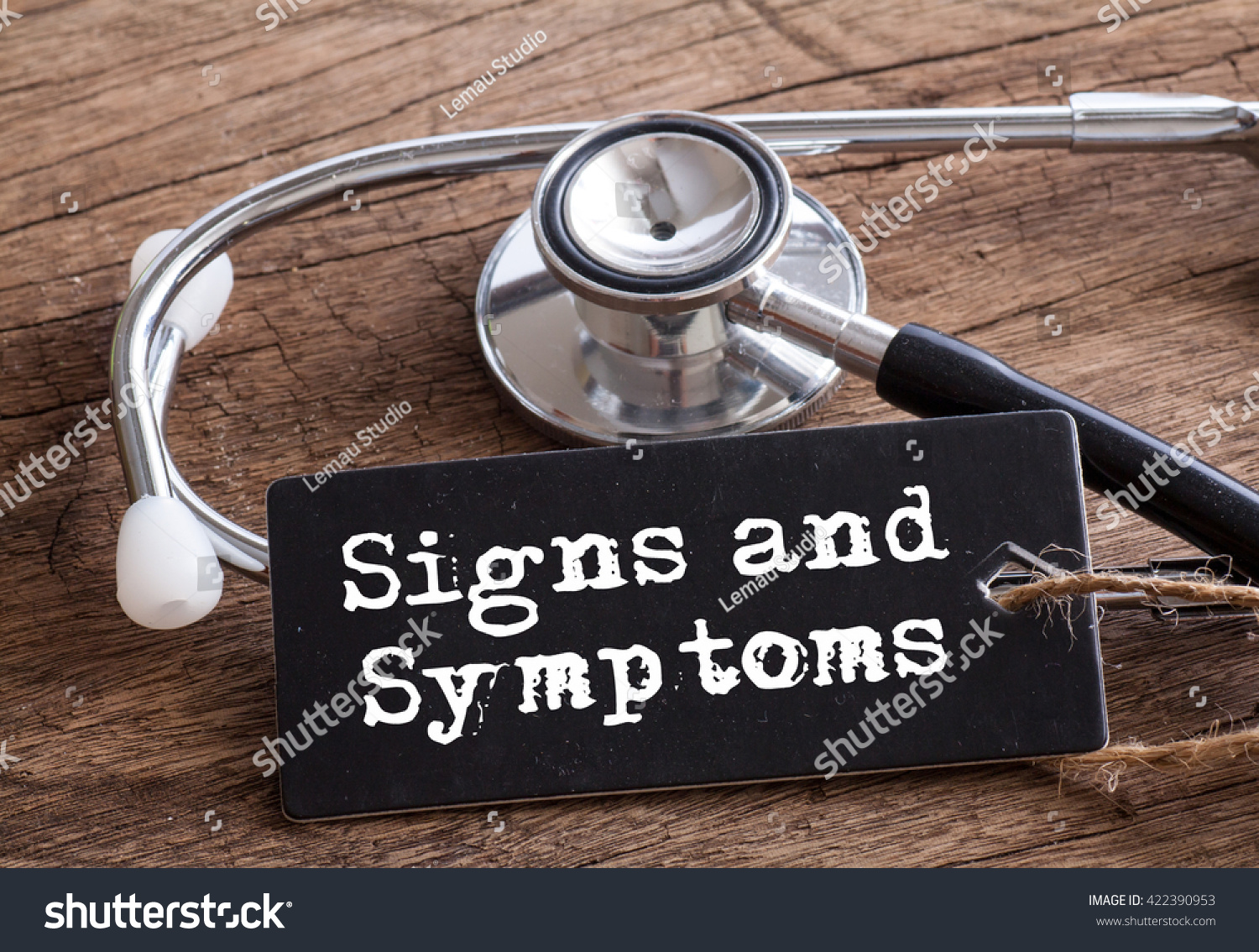
Common Signs of Animal Diseases
- Behavioural Changes: Noticeable changes in an animal's behaviour, such as aggression, fearfulness, or depression, may indicate discomfort or illness.
- Fever: Elevated body temperature is a common sign of infection or illness in animals.
- Loss of Appetite: A decrease in food intake or interest in eating may signal an underlying health issue.
- Lethargy: Animals that are unusually tired, weak, or unresponsive may be sick.
- Coughing and Sneezing: Respiratory symptoms, such as coughing, sneezing, or nasal discharge, can indicate respiratory infections.
- Diarrhea and Vomiting: Gastrointestinal symptoms like diarrhea, vomiting, or changes in stool consistency may suggest digestive or infectious diseases.
- Skin Lesions: Skin abnormalities, such as rashes, sores, hair loss, or redness, can be signs of dermatological conditions or infections.
- Increased Thirst and Urination: Changes in water consumption and urination patterns can be linked to kidney or metabolic issues.
- Weight Loss: Unexplained weight loss may be due to underlying medical conditions.
Common Signs of Zoonotic Diseases in Humans
- Fever: An elevated body temperature is often an early sign of infection, including zoonotic diseases.
- Flu-Like Symptoms: Many zoonotic diseases can present with symptoms resembling the flu, including fever, fatigue, muscle aches, and headache.
- Gastrointestinal Symptoms: Some zoonotic diseases can cause digestive problems like diarrhea, vomiting, abdominal pain, and nausea.
- Respiratory Symptoms: Respiratory infections caused by zoonotic pathogens may lead to coughing, sneezing, shortness of breath, or chest discomfort.
- Skin Changes: Skin rashes, sores, hives, or itching can occur in some zoonotic diseases.
- Neurological Symptoms: In severe cases, zoonotic infections may affect the nervous system, leading to symptoms like confusion, seizures, or paralysis.
- Jaundice: Yellowing of the skin and eyes (jaundice) can be a sign of certain zoonotic diseases affecting the liver.
- Swelling and Lymphadenopathy: Enlarged lymph nodes and swelling in various body parts may occur in response to infections.
It's important to note that the signs of diseases can vary widely depending on the specific pathogen, the affected organ systems, and the individual's overall health. Prompt medical attention and diagnosis are crucial for both animals and humans displaying signs of illness to identify the underlying disease and initiate appropriate treatment or preventive measures. Additionally, practicing good hygiene, taking preventive measures (e.g., vaccinations), and seeking regular veterinary care for animals can help reduce the risk of disease transmission.
Basic methods used in the prevention and control of common zoonotic diseases
Let’s explore the seven (7) most basic methods used in the prevention and control of common animal and zoonotic diseases:
- Handwashing: Frequent and thorough handwashing with soap and water is one of the most effective measures to prevent zoonotic disease transmission. Workers should wash hands after handling animals, cleaning enclosures, and before eating or drinking.
- Personal Protective Equipment (PPE): Use appropriate PPE, such as gloves and protective clothing, when handling animals or cleaning contaminated areas. Dispose of PPE properly.
- Regular Veterinary Care: Ensure that animals receive regular veterinary check-ups and vaccinations to detect and prevent diseases. Sick animals should be isolated and treated promptly.
- Monitoring: Monitor animals for signs of illness, including changes in behaviour, appetite, or physical condition. Early detection of disease in animals is essential to prevent human exposure.
- Cleanliness: Maintain clean and sanitised animal enclosures and facilities. Remove and dispose of animal waste properly to reduce the risk of contamination.
- Ventilation: Ensure proper ventilation in indoor areas to reduce the concentration of airborne pathogens.
- Pest Management: Implement measures to control pests like rodents and insects that can transmit diseases. This may include pest-proofing facilities and using safe pest control methods.
- Staff Training: Provide training to staff on zoonotic diseases, their transmission, and prevention measures. Workers should be aware of the risks and how to protect themselves.
- Visitor Education: Educate visitors about potential zoonotic risks and proper hygiene practices, such as handwashing.
- Quarantine: Implement a quarantine protocol for newly arrived animals to prevent the introduction of diseases into the facility.
- Isolation: Isolate sick animals from healthy ones to prevent disease spread within the facility.
- Reporting: Establish a system for reporting any suspected cases of zoonotic diseases in both animals and humans.
- Response: Respond promptly to suspected cases with appropriate medical care for affected individuals and treatment for animals. Isolate affected animals to prevent further spread.
Read
For the full list of Zoonoses in Australia as well as their symptoms, prevention and control measures, please access:
Zoonoses – animal diseases that can infect people (nsw.gov.au)
Addressing identified hazards and selecting risk controls before commencing work in an animal care setting is a critical practice that underpins the safety and well-being of both workers and the animals they care for. In this dynamic and often unpredictable environment, where animals can be unpredictable and zoonotic diseases are a concern, a proactive approach to hazard management is paramount. By identifying potential risks, whether they involve physical hazards, chemical exposures, disease transmission, or ergonomic strains, you can take the necessary steps to mitigate these risks. This can involve implementing measures such as safe handling procedures, providing personal protective equipment, ensuring proper ventilation, and maintaining strict hygiene protocols.
Furthermore, addressing hazards before work begins not only aligns with legal obligations to provide a safe workplace but also fosters a culture of safety within the organisation. It demonstrates an organisation's commitment to the welfare of both its employees and the animals in its care. This, in turn, can lead to increased worker morale, reduced workplace injuries and associated costs, and a positive reputation that instils confidence among clients, visitors, and the broader community. In essence, this proactive approach not only minimises risks but also enhances overall workplace safety, productivity, and public trust in animal care facilities.
Hierarchy of risk control
The hierarchy of risk control is a framework that outlines the preferred order of risk control measures to manage workplace hazards effectively. It is a fundamental principle of workplace health and safety management.
Let’s find out more about the hierarchy of risk control from Safe Work Australia Model Code of Practice: How to manage work health and safety risks:
Model Code of Practice: How to manage work health and safety risks | Safe Work Australia
Note: This model Code of Practice has been developed to provide practical guidance for persons who have duties to manage risks to health and safety under the WHS Act and Regulations applying in a jurisdiction. The duty is placed on persons conducting a business or undertaking, including employers, self-employed, principal contractors, persons with management or control of a workplace, designers, manufacturers, importers and suppliers of plant, substances or structures that are used for work.
Check with your local regulator to find out if this Code of Practice has legal effect in your jurisdiction.
Basic risk control measures
Risk control measures in animal care are essential to ensure the safety of both workers and animals in the facility. Here are detailed explanations of basic risk control measures, including personal protective equipment (PPE) requirements, personal hygiene and hand washing, workplace health and safety housekeeping, and safety signs:
Personal Protective Equipment (PPE) Requirements:
- Use: PPE in animal care may include gloves, masks, goggles, aprons, and protective clothing. Workers should use the appropriate PPE for the task at hand. For example, gloves should be worn when handling animals, cleaning enclosures, or administering medications to prevent direct contact with bodily fluids or zoonotic pathogens. Masks and goggles protect against airborne particles, allergens, or chemicals during cleaning or handling procedures.
- Storage: PPE should be stored in designated areas that are clean, dry, and protected from contamination. Gloves and other disposable PPE should be stored in their original packaging to prevent damage and ensure they remain clean and sanitary.
- Maintenance: Regular inspection and maintenance of PPE are essential. Inspect gloves for tears or damage before each use and replace them if compromised. Masks and goggles should be cleaned and disinfected after use, and damaged or worn-out PPE should be replaced promptly.
Personal Hygiene and Hand Washing:
- Hand Washing: Thorough handwashing is critical in preventing the transmission of zoonotic diseases. Workers should wash their hands with soap and warm water for at least 20 seconds:
- Before and after handling animals.
- After cleaning enclosures or handling animal waste.
- Before eating and drinking.
- After removing PPE
- After coughing, sneezing, or touching the face.
- Nail Care: Workers should keep their nails short and clean, as pathogens can accumulate under long nails. Fingernail brushes may be provided for thorough cleaning.
- Cough and Sneezing Etiquette: Encourage workers to cover their mouth and nose with a tissue or their elbow when coughing or sneezing to prevent the spread of respiratory pathogens.
Workplace Health and Safety Housekeeping:
- Cleanliness: Maintaining a clean and well-organised workspace is crucial. Regularly clean and disinfect animal enclosures, work surfaces, and equipment. Remove waste and debris promptly to prevent contamination.
- Waste Disposal: Implement proper waste disposal procedures for animal waste, used bedding, and other materials. Use leak-proof containers and clearly labelled bins for different types of waste, including hazardous waste if applicable.
- Storage: Store chemicals, cleaning agents, and medications securely in designated areas away from animal enclosures and food storage. Ensure containers are labelled correctly.
- Ventilation: Ensure proper ventilation to remove odours, dust, and potentially harmful airborne particles. Adequate ventilation helps maintain air quality and reduces respiratory risks.
Safety Signs:
- Warning Signs: Use warning signs to alert workers and visitors to potential hazards. For example, signs can indicate areas where aggressive animals are housed, areas under construction, or where PPE is required.
- Emergency Signs: Install emergency signs indicating the location of emergency exits, first aid kits, eye wash stations, and fire extinguishers. These signs provide guidance during critical situations.
- Animal Behaviour Signs: Use signs to inform workers and visitors about the behaviour of specific animals. For example, signs may indicate that a particular animal is prone to biting or should not be disturbed during certain times.
- Hygiene Signs: Place signs near handwashing stations to remind individuals of the importance of hand hygiene, including proper handwashing procedures.
By implementing these risk control measures and ensuring compliance among workers, animal care facilities can minimise health and safety risks, prevent disease transmission, and create a safer environment for both animals and humans. Regular training and reinforcement of these measures are also essential to maintaining a culture of safety within the workplace.
Safety signs and their meanings
Safety signs follow a standardised system to convey important information about hazards, emergency equipment, personal protective equipment (PPE), and specific dangers. Here are the meanings and examples of common safety signs:
Dangerous Goods Class Signs:
![]()
- Class 1 - Explosives: Indicates the presence of explosive materials. These materials can pose a severe risk in case of mishandling or accidents.
- Class 2 - Gases: Indicates the presence of compressed gases or liquefied gases. These gases may be flammable, toxic, or otherwise hazardous.
- Class 3 - Flammable Liquids: Signals the presence of flammable liquids that can ignite easily.
- Class 4 - Flammable Solids: Indicates the presence of flammable solids that can catch fire spontaneously.
- Class 5 - Oxidising Substances: Signifies materials that can release oxygen and intensify fires.
- Class 6 - Toxic and Infectious Substances: Warns about toxic or infectious materials that can cause harm to health.
- Class 7 - Radioactive Materials: Indicates the presence of radioactive materials or ionizing radiation sources.
- Class 8 - Corrosive Substances: Alerts to the presence of corrosive materials that can cause chemical burns or damage to materials.
- Class 9 - Miscellaneous Dangerous Goods: Covers various other dangerous goods that don't fit into the above categories.
Emergency Equipment Signs:
- Emergency Evacuation: Shows the way to emergency exits and escape routes.

- Fire Extinguisher: Indicates the location of fire extinguishers. These signs often include information about the type of fire the extinguisher is suitable for (e.g., Class A, B, C fires).
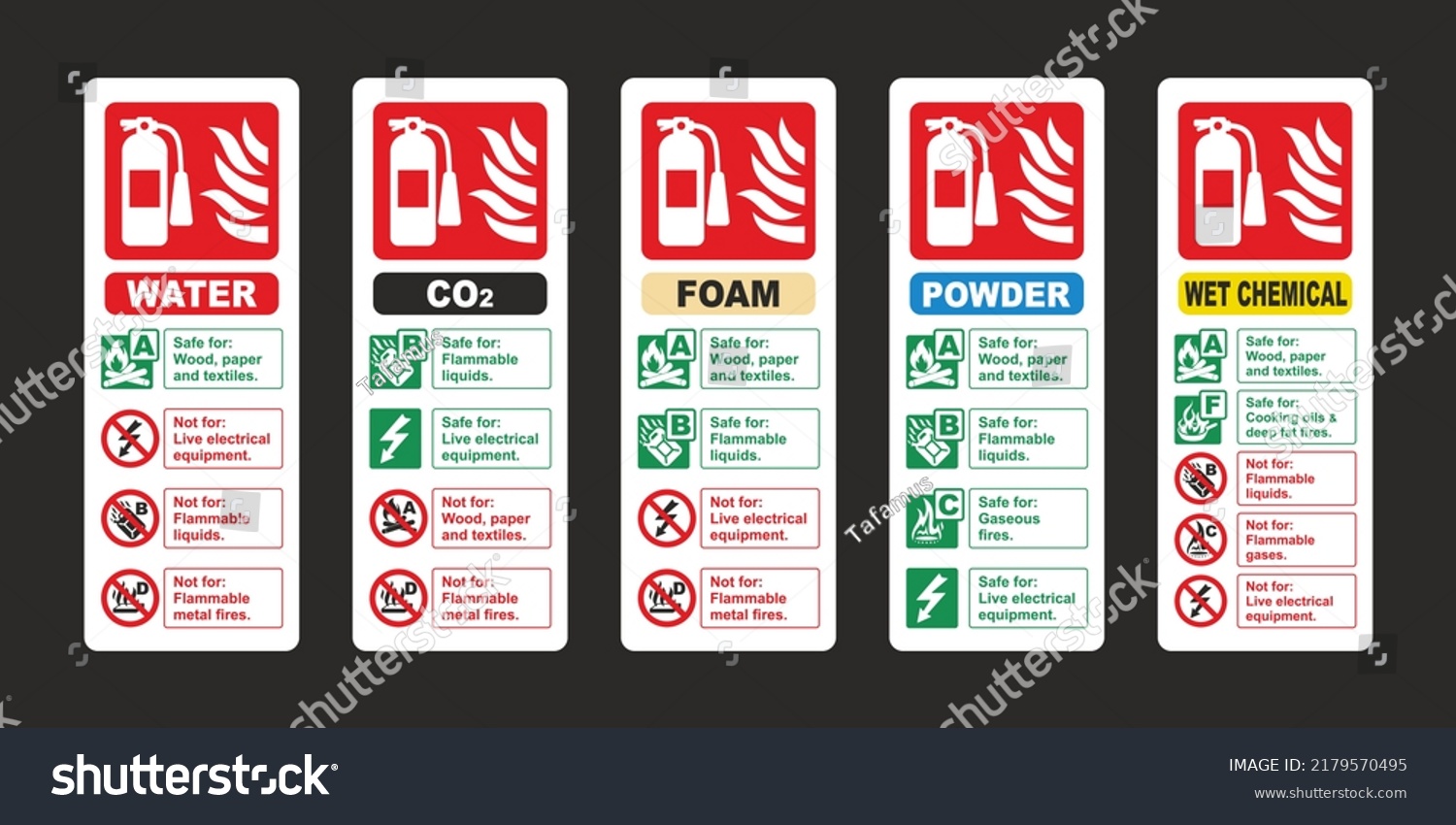
- Fire Hose Reel: Shows the location of fire hose reels, which can be used for firefighting.
![]()
First Aid Signs
- First Aid Kit: Indicates the location of first aid kits, where essential medical supplies are stored for immediate care in case of injuries.
![]()
- Emergency Defibrillator (AED): Informs individuals about the presence of automated external defibrillators, which are used to provide electric shocks to the heart in cases of cardiac arrest.
![]()
- Emergency Shower and Eye Wash: Indicates the location of emergency showers and eye wash stations for chemical splash incidents.
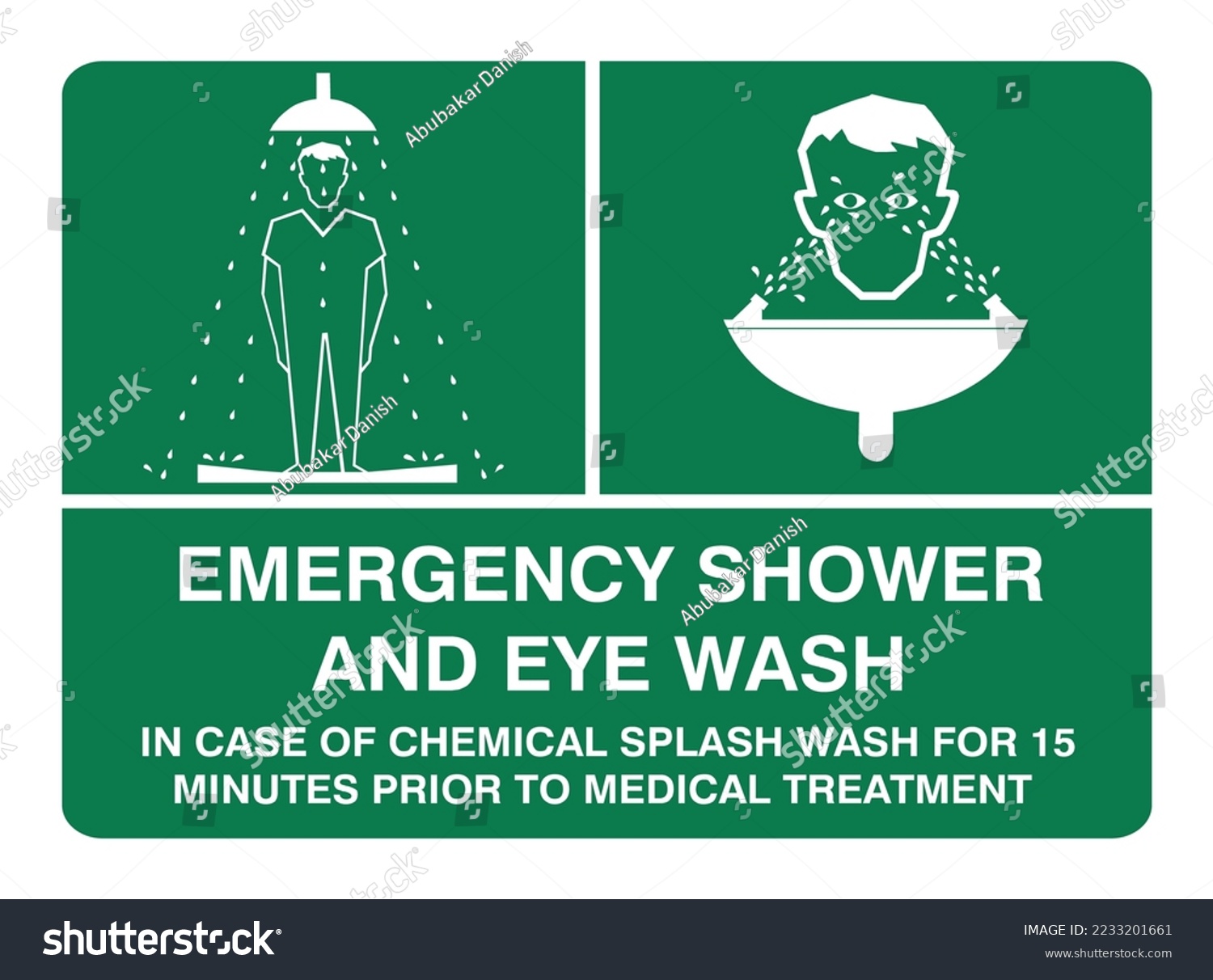
PPE Signs
- Wear Respiratory Protection: Reminds workers to wear appropriate respiratory protection in areas with airborne hazards.
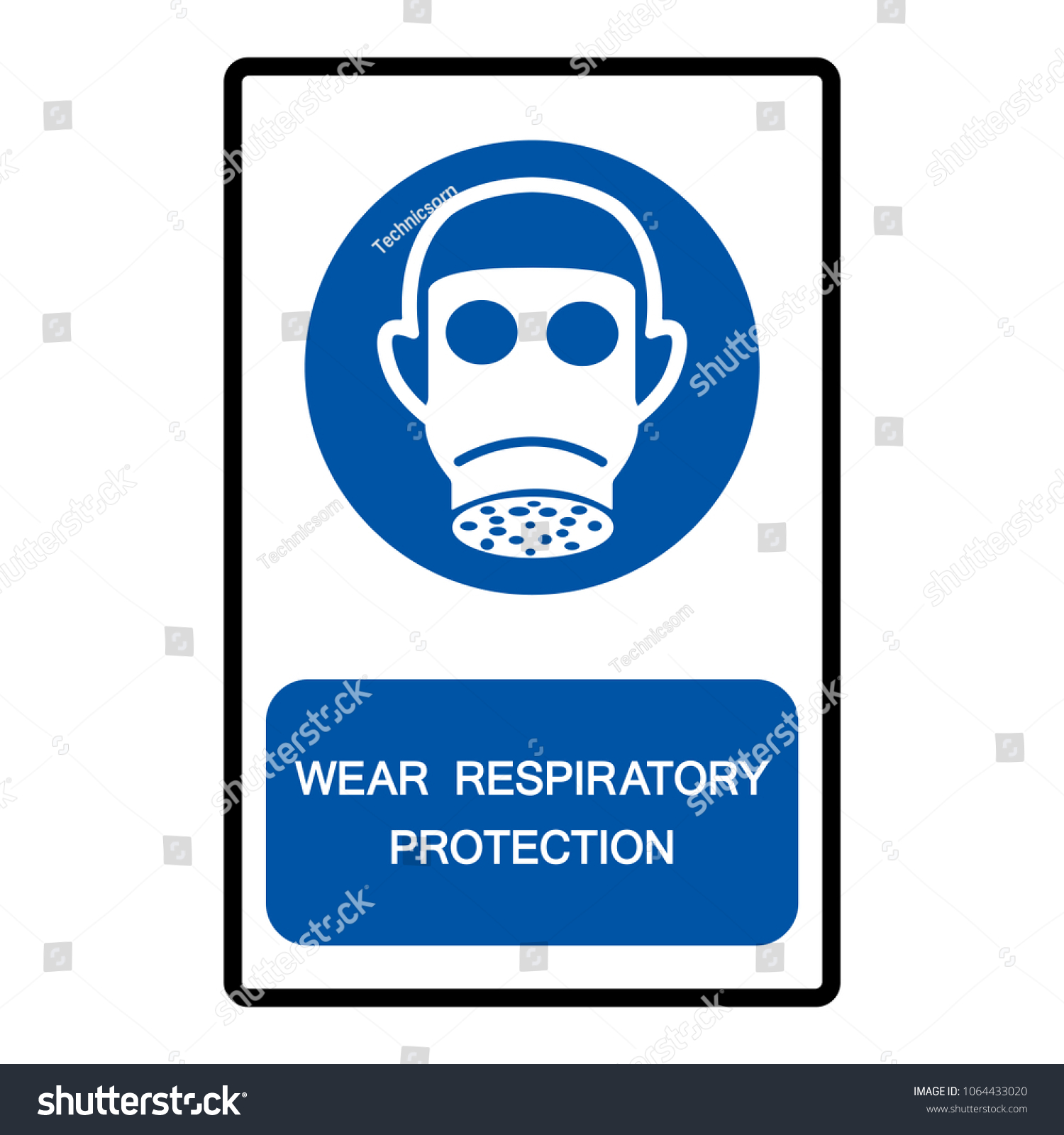
- Wear Hearing Protection: Indicates the need for hearing protection in noisy environments.
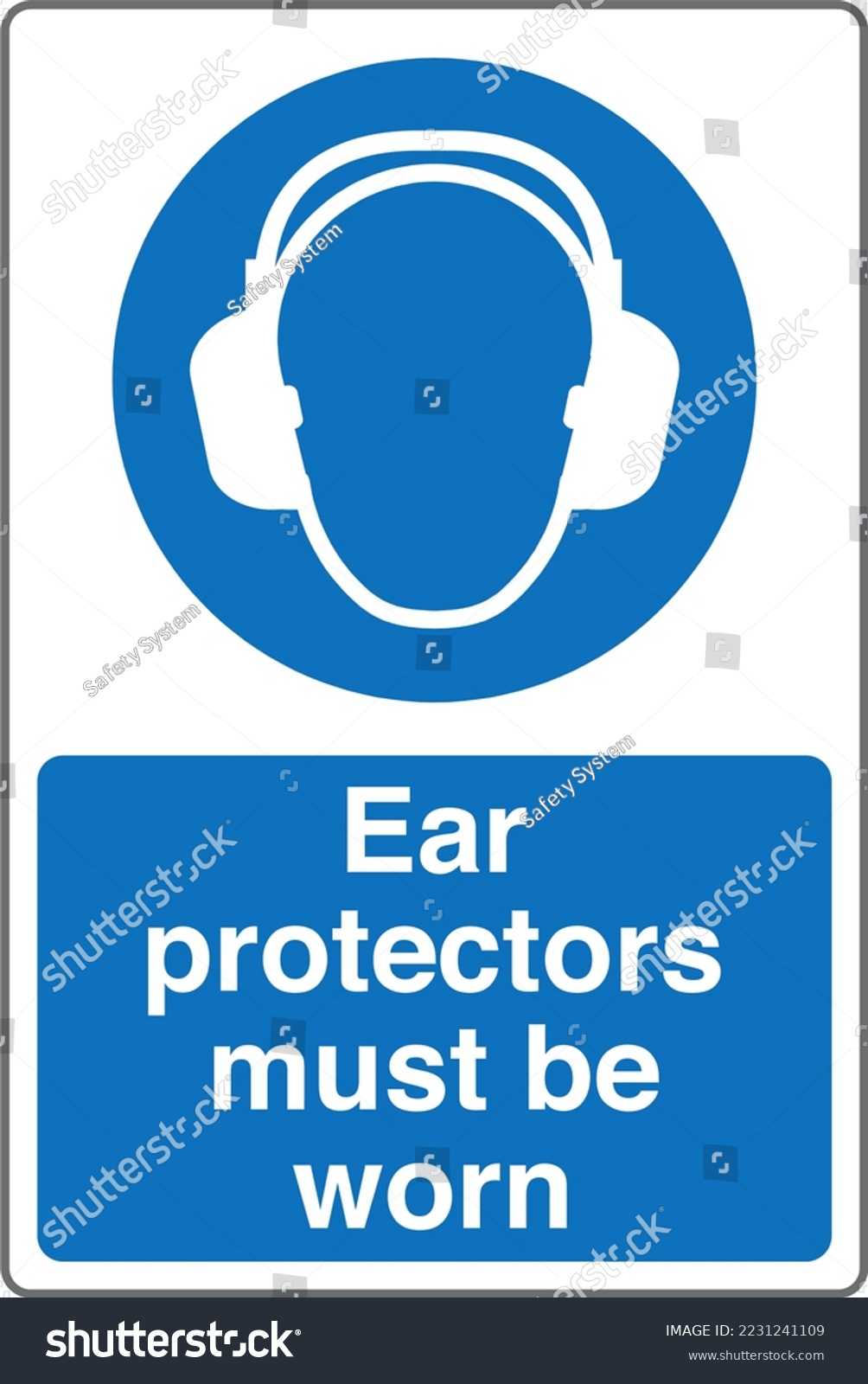
- Wear Eye Protection: Reminds workers to wear eye protection, such as safety glasses or goggles, in areas where there is a risk of eye injury.
![]()
- Wear Hand Protection: Indicates the need for hand protection, such as gloves, when handling hazardous materials or performing tasks that may cause hand injuries.
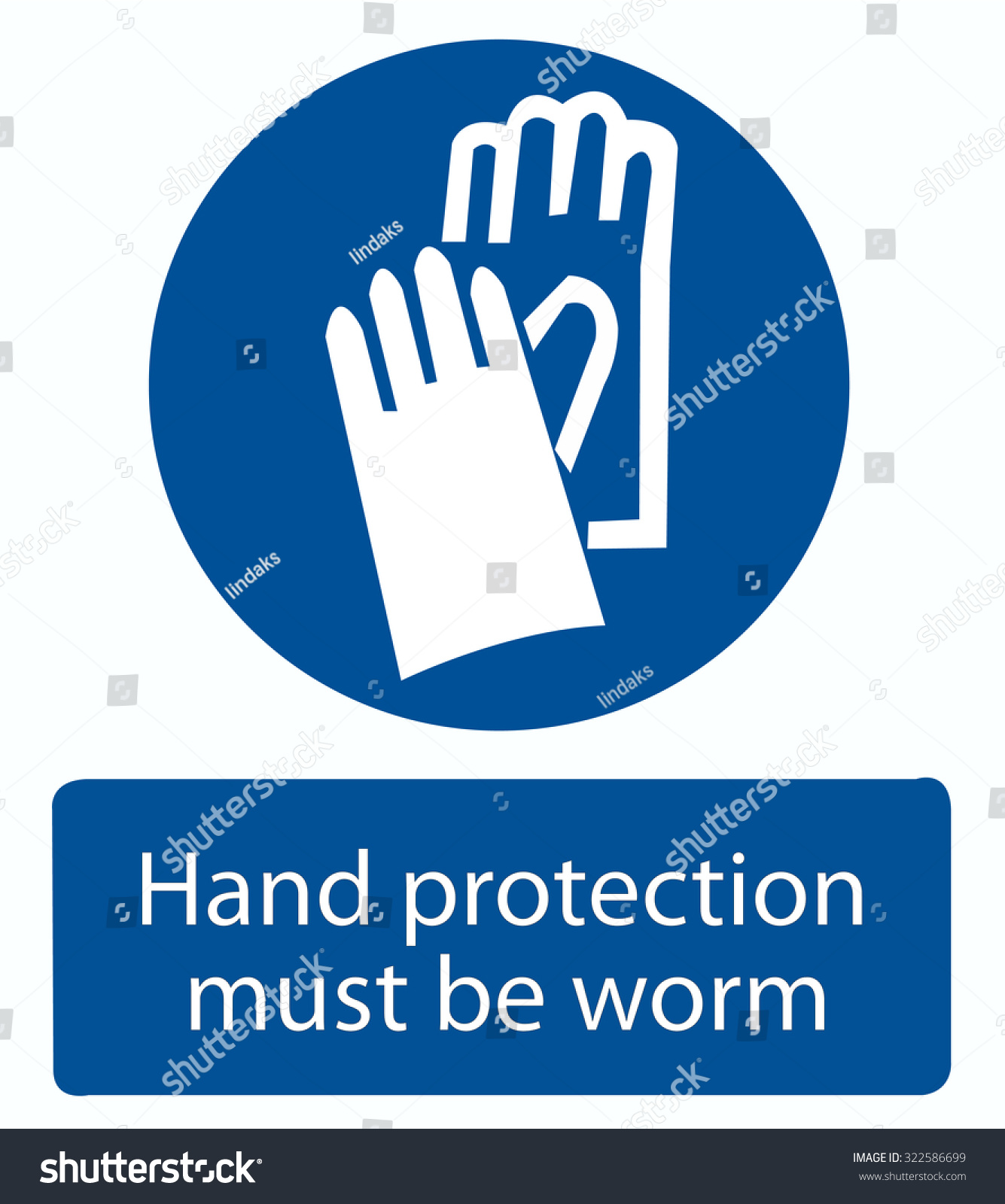
- Wear Foot Protection: Reminds individuals to wear appropriate footwear, such as steel-toed boots, to protect against foot injuries in industrial or construction settings.
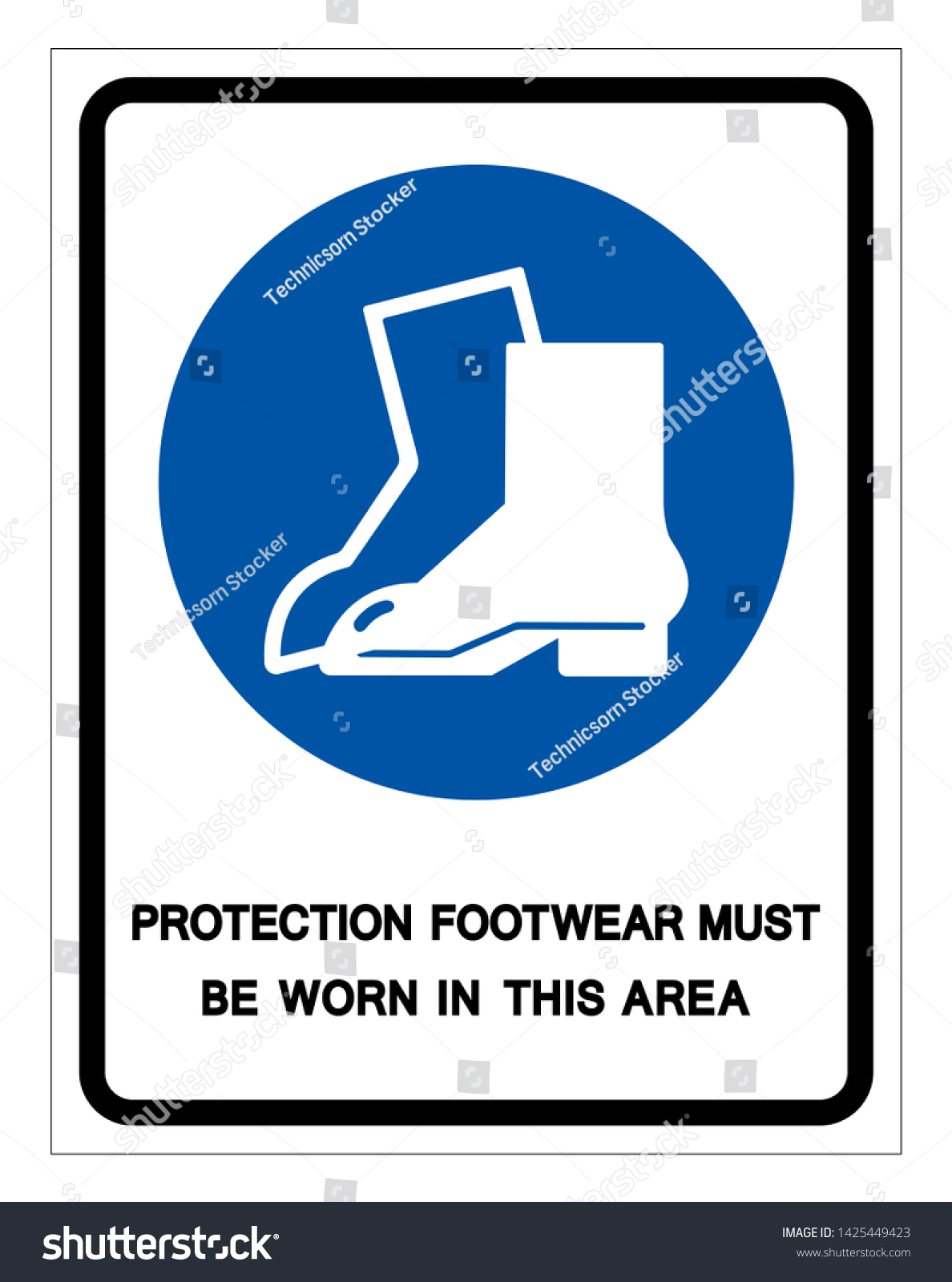
- Wear Head Protection: Alerts workers to the need for head protection, such as hard hats, in areas with overhead hazards.
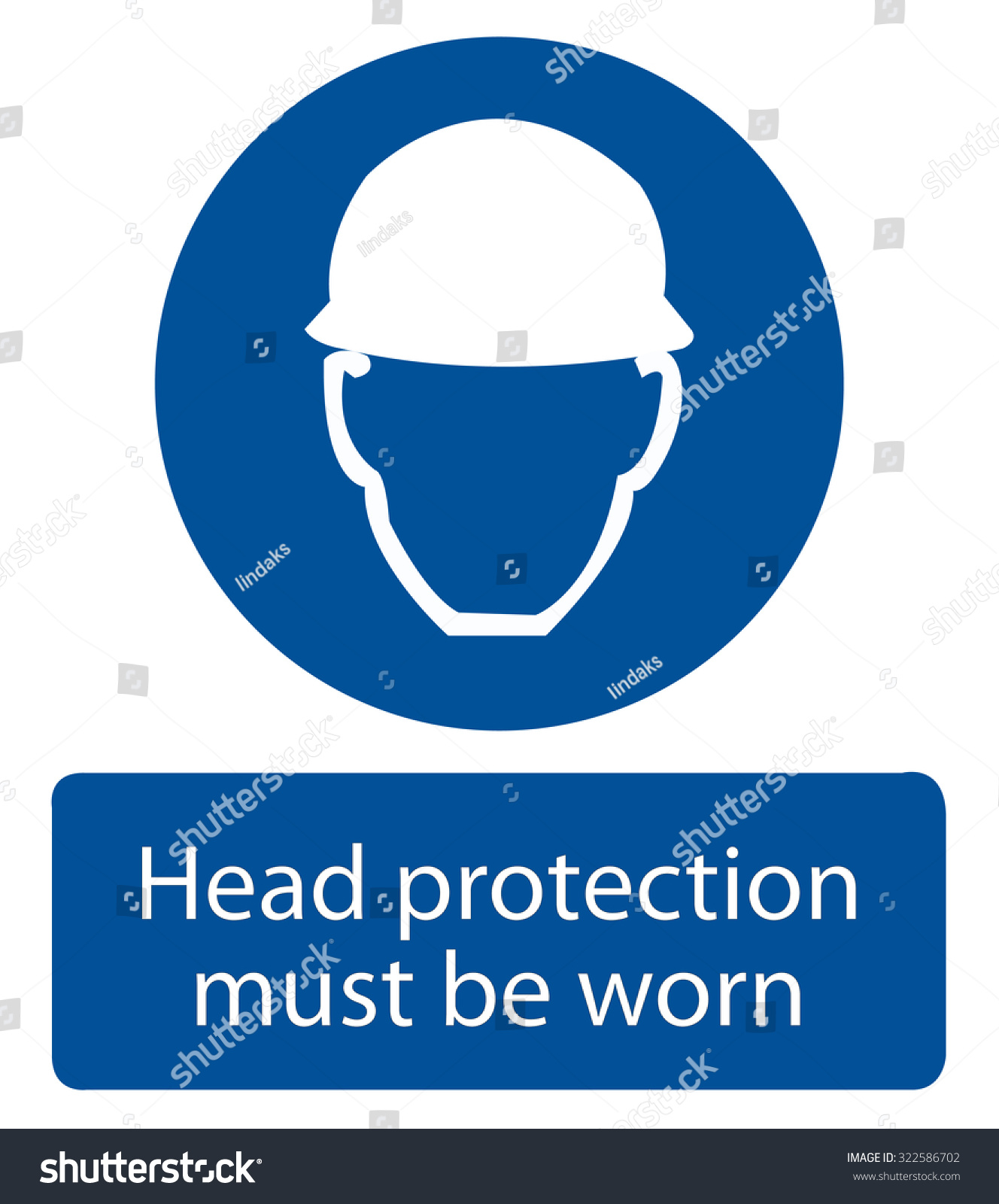
Specific Hazard Signs
- Sharps Hazard Sign: Warns about the presence of sharp objects or medical waste that may cause injuries or infections.

- Radiation Hazard Sign: Alerts to the presence of ionizing radiation or areas with potential radiation exposure. E.g.: When X-ray equipment may be used.
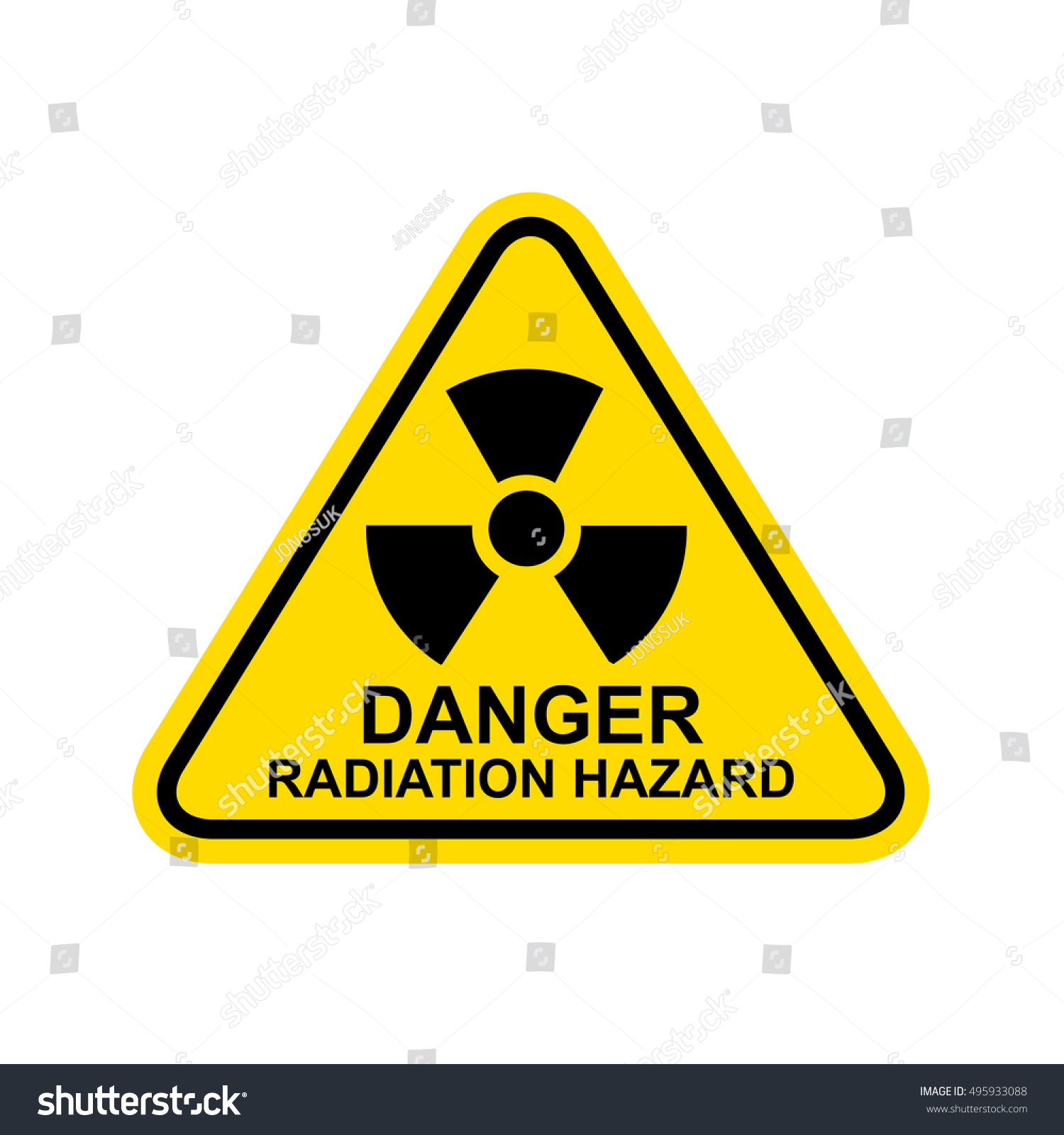
- Slippery Surface Hazard Sign: Warns individuals about the presence of slippery or wet surfaces, which can lead to slip and fall accidents.
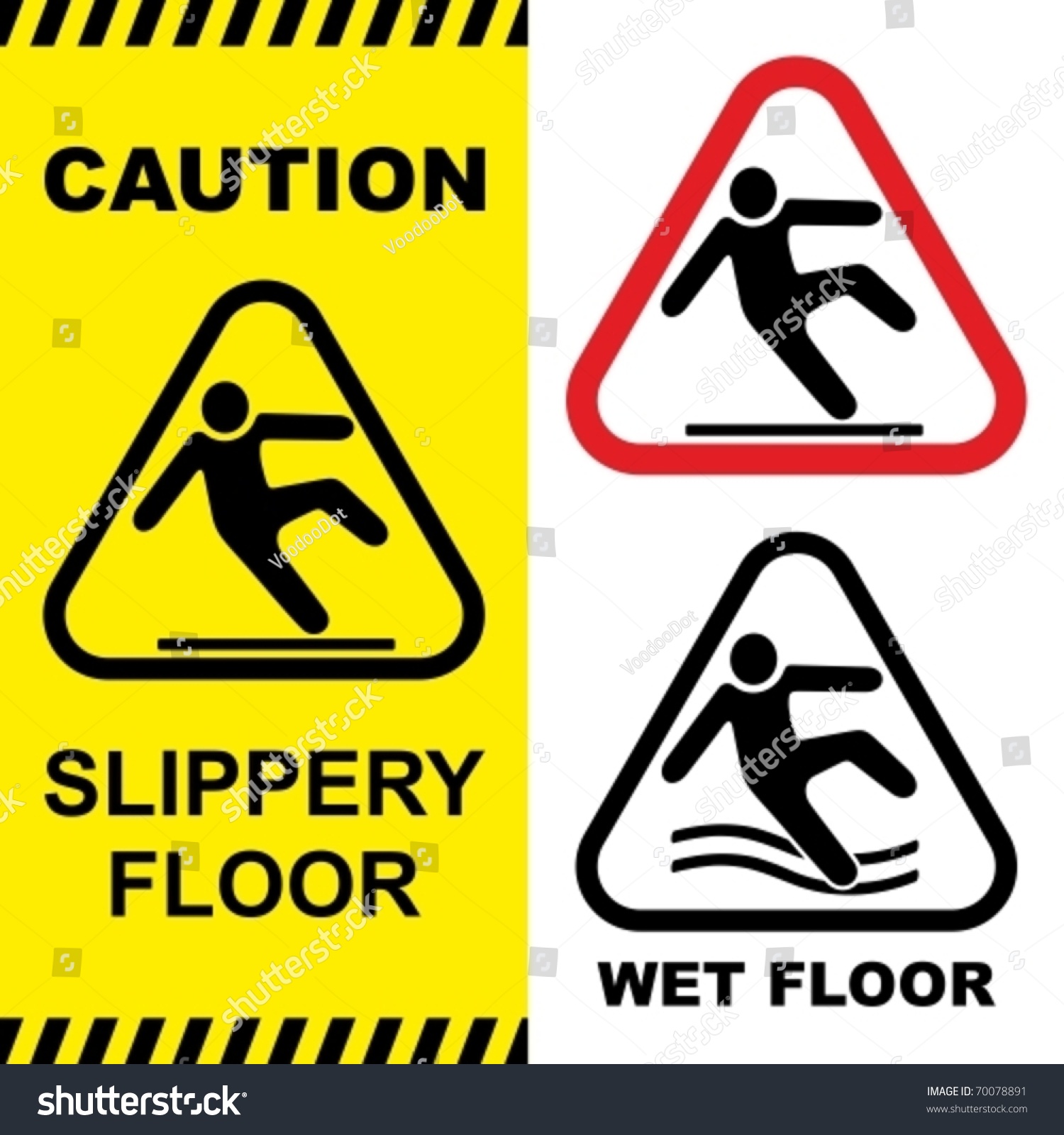
- Electrical Hazard Sign: Warns individuals about the presence of electrical hazards, including the risk of electric shock. It may indicate the location of high-voltage equipment or areas where electrical work is in progress.
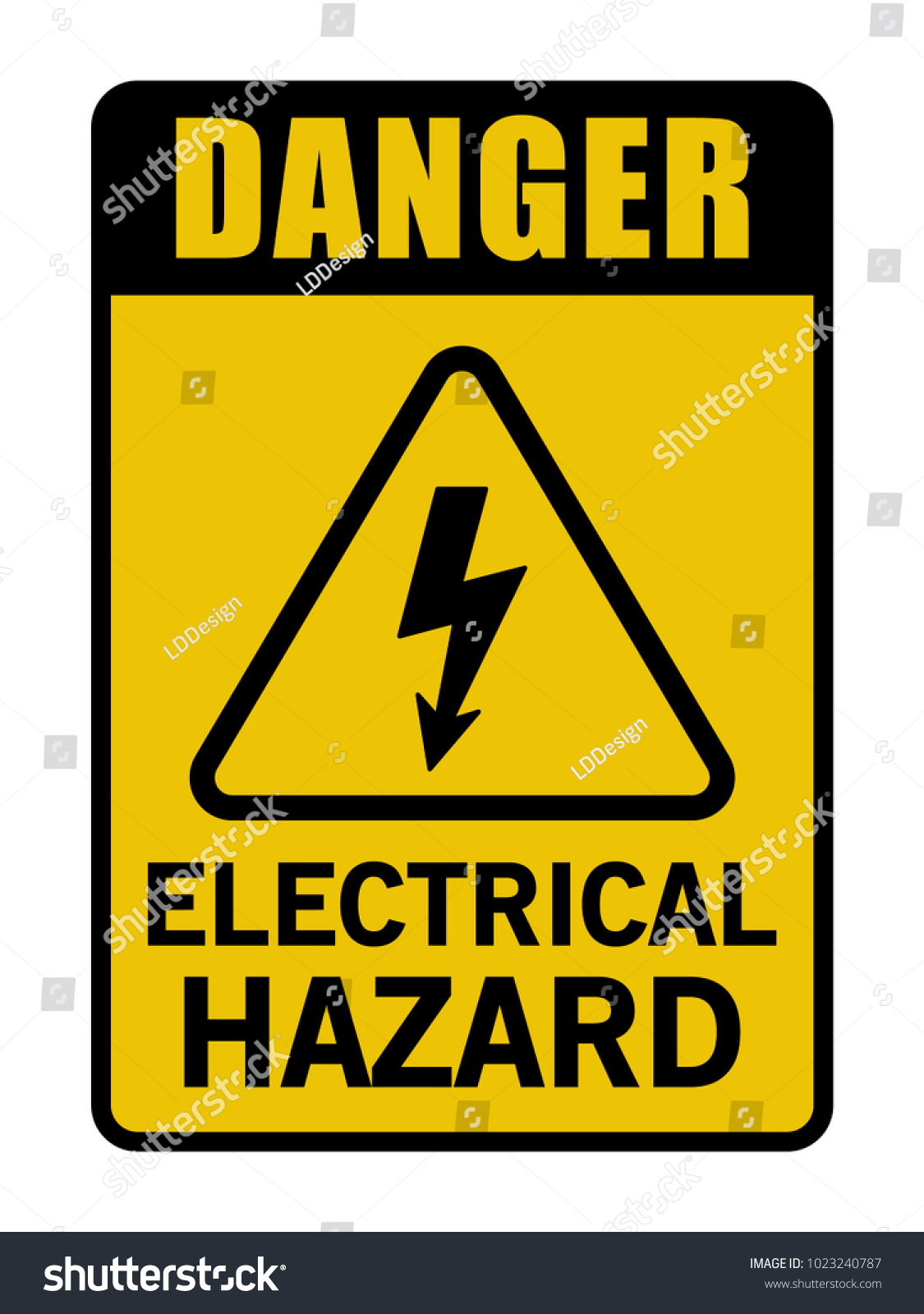
- Confined Space Entry Sign: Informs individuals that a space is a confined area with specific entry requirements.

- Fall Hazard Sign: Used to indicate areas where there is a risk of falling, such as open pits, unguarded edges, or construction sites., often used in construction, mining, or industrial settings.
![]()
- Forklift Traffic Sign: Alerts individuals to the presence of forklifts or other industrial vehicles, emphasizing the need to stay clear and exercise caution.
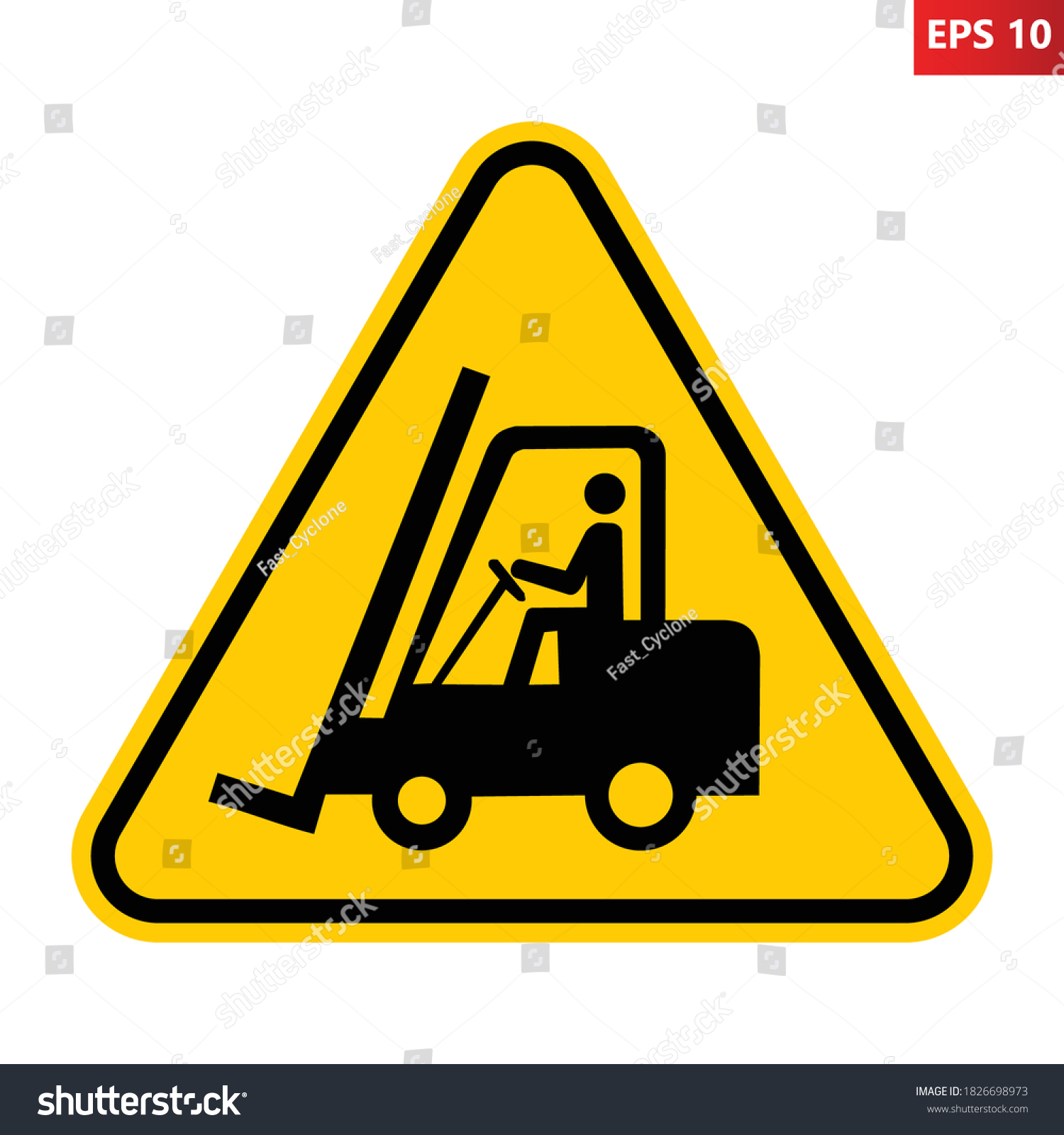
- High Noise Area Sign: Warns individuals about high noise levels in the area and the need for hearing protection. Common in industrial settings with loud machinery.
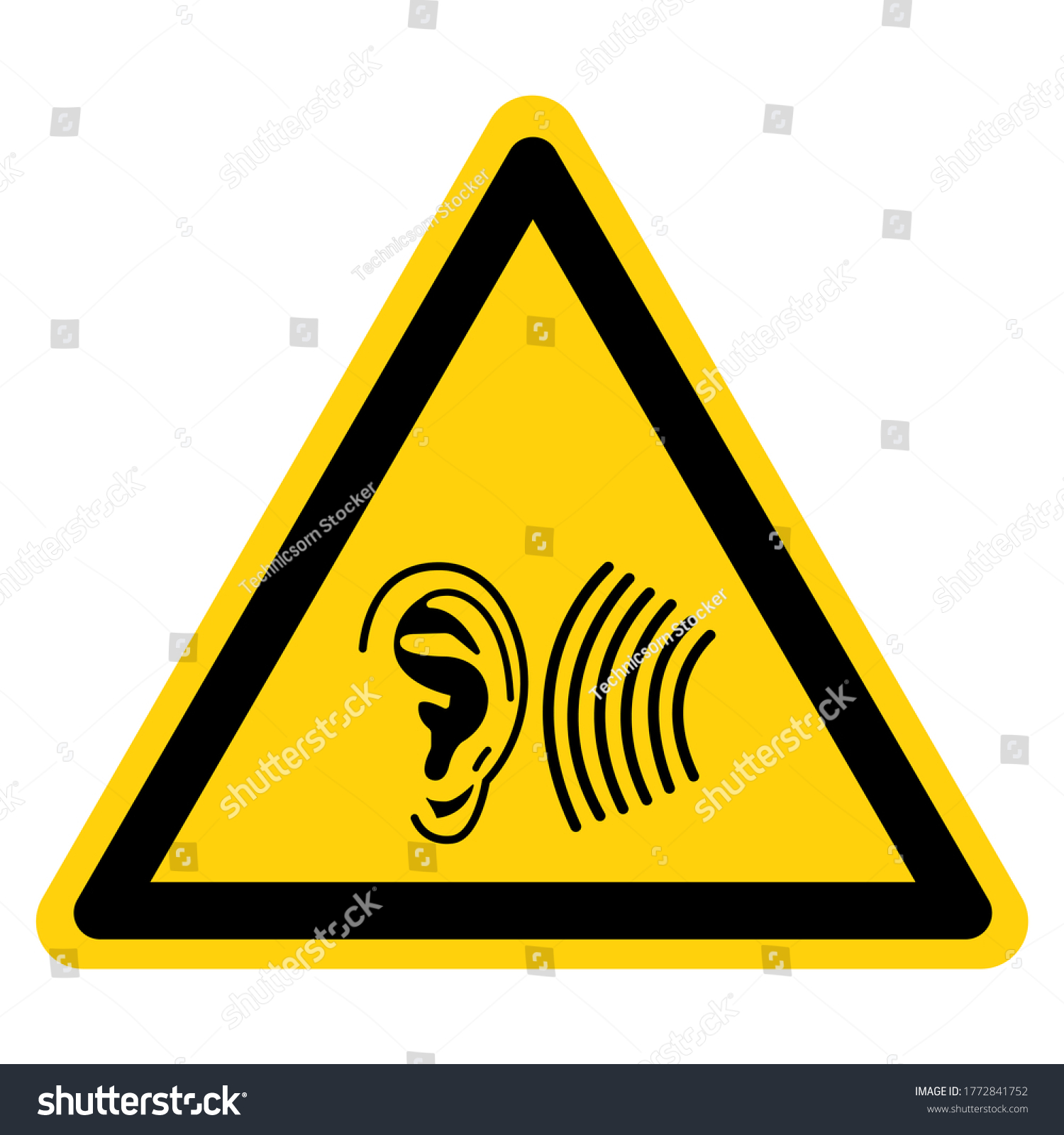
Animal Behaviour Signs
-
Do Not Feed the Animals: This sign informs visitors not to feed the animals. Feeding animals by visitors can disrupt their natural diets and behaviours and pose risks to both animals and humans.
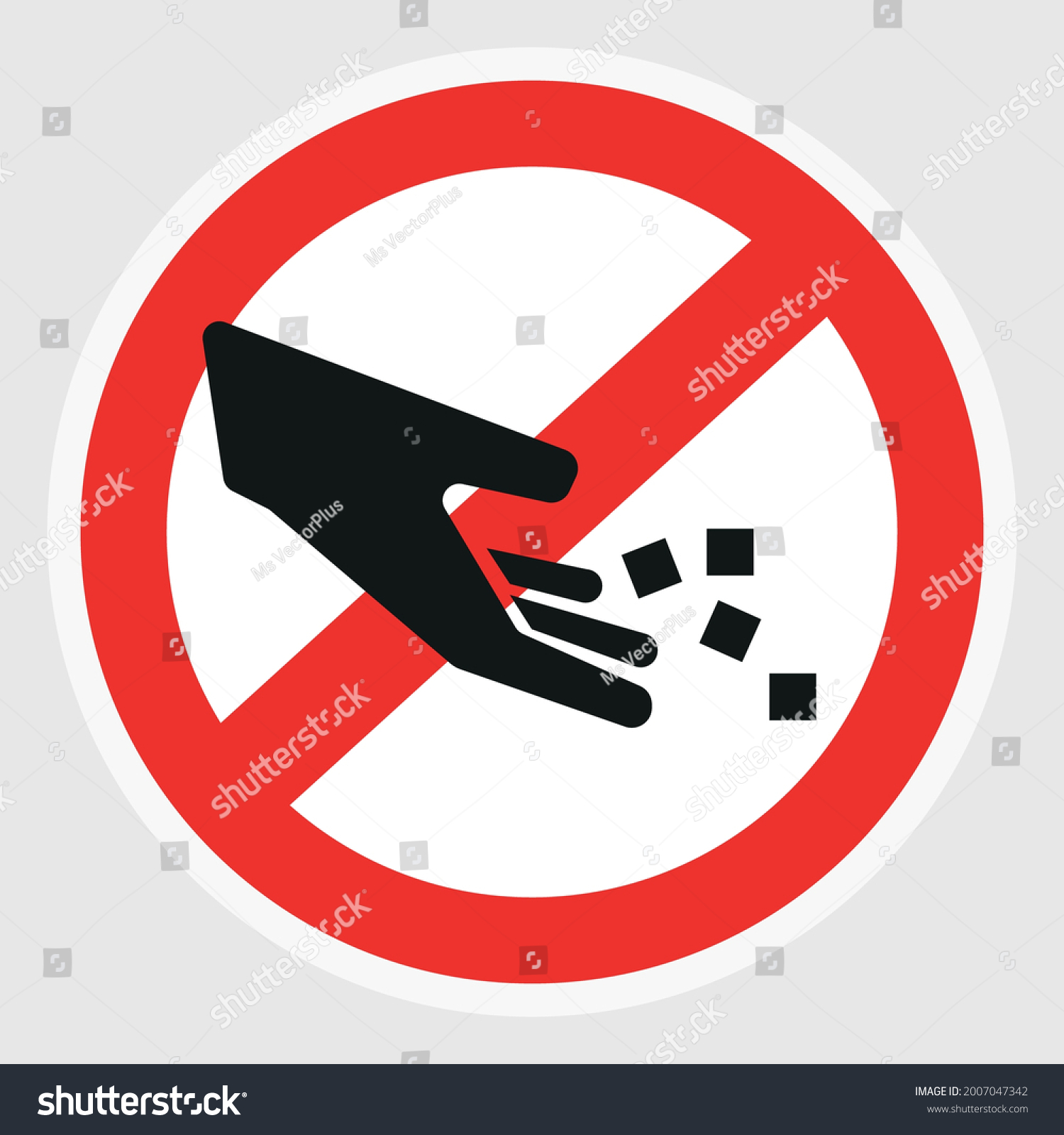
- Caution: Aggressive Animal: This sign indicates that an animal in the vicinity is known to be aggressive or potentially dangerous. Here is one example:
- Quiet Zone: Used in areas where animals may be sensitive to noise, this sign requests visitors to maintain a quiet atmosphere to avoid stressing the animals.
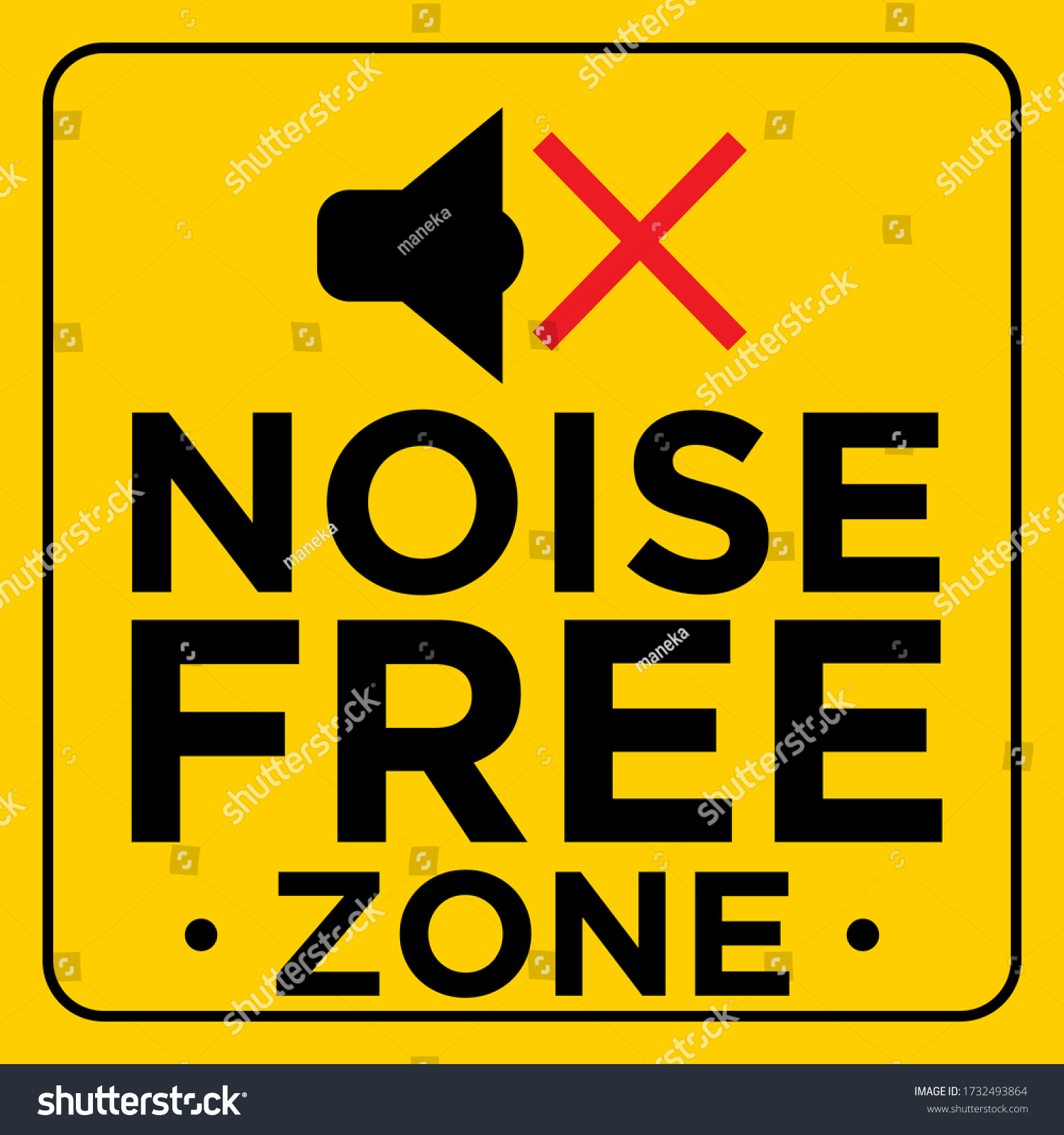
- No Flash Photography: Some animals are sensitive to bright lights or camera flashes. This sign instructs visitors not to use flash photography in the area.
![]()
- Stay on the Path: Encourages visitors to stay on designated paths and not to enter restricted areas to ensure their safety and prevent disturbances to the animals.
- Do Not Tap on Glass: Common in zoo settings, this sign reminds visitors not to tap on glass enclosures, which can stress or frighten the animals.
- Caution: Nesting Birds: In wildlife areas, this sign may indicate the presence of nesting birds and advises people to keep their distance to avoid disturbing the nests. Here is one example:
How to address identified hazards and select and implement appropriate risk controls
Selecting and implementing appropriate risk controls for identified hazards in animal care involves a systematic process. Here's a detailed guide on how to do this effectively:
Step 1: Familiarise Yourself with WHS Policies
Ensure you have a solid understanding of your organisation's WHS policies and procedures. These documents outline the standards and guidelines you must follow to ensure workplace safety and compliance.
Step 2: Assess Risks
- Evaluate the likelihood and severity of each identified hazard. Use a risk matrix or assessment tool to quantify risks.
- Consider the vulnerability of workers, animals, and visitors to these hazards.
- Prioritise risks based on their potential for harm, taking into account the frequency of exposure and the potential consequences.
Step 3: Select Risk Controls
Once hazards are assessed, prioritise them for control. Use the hierarchy of risk control, as mentioned earlier, to guide your selection:
- Elimination: If feasible, remove the hazard entirely (e.g., relocating aggressive animals to a separate enclosure).
- Substitution: Replace hazardous materials or procedures with safer alternatives (e.g., using non-toxic cleaning agents).
- Isolation: Isolation involves physically separating the hazard from workers, animals, or the public to prevent exposure or contact with the hazard. In an animal care environment, this can include measures such as isolating aggressive or sick animals from the general population, creating designated areas for specific tasks, or using enclosures and barriers to keep animals and workers safe.
- Engineering Controls: Modify the environment or equipment to reduce exposure to hazards (e.g., install non-slip flooring).
- Administrative Controls: Implement work procedures and policies to mitigate risks (e.g., creating a schedule for animal handling to reduce fatigue From a human resources standpoint, it's important to ensure that suitable staff members are assigned to handle specific animals. For instance, larger or stronger animals may necessitate the presence of multiple staff members for safe handling.
- Personal Protective Equipment (PPE): Use appropriate PPE where other controls are not sufficient (e.g., gloves, masks, safety glasses).
Ensure that selected controls are practical, effective, and feasible for implementation.
Step 4: Implement Controls
Select control measures based on your risk assessment. Ensure that your chosen controls align with WHS policies and procedures. Common controls include:
- Safe animal handling techniques or behavioural training.
- Proper use of personal protective equipment (PPE). Adhere to WHS guidelines regarding the use of PPE. Assess the need for PPE based on your tasks and identified hazards. Ensure you have access to and wear the necessary PPE as required, following established procedures.
- Equipment maintenance to prevent accidents.
Confirm that the selected control measures are consistent with WHS guidelines and standards.
Case Study
Risk of Food Contamination in the Pet Store's Bulk Food Bins
Identification of the Risk: John, an employee of “Perfect Pets” who was responsible for stocking the bulk food bins for various pet types (e.g., dog food, cat food, birdseed) noticed a potential risk of food contamination. They observed that a bin containing birdseed had a broken lid, allowing dust, debris, and even small insects to enter the bin, potentially contaminating the birdseed.
Addressing the Risk: John promptly removed the affected bin of birdseed from the sales floor to prevent any contaminated products from being sold to customers. In a designated area, John inspected the bin and its contents for signs of contamination, removing any obviously contaminated food. He thoroughly cleaned and sanitised the empty bin, ensuring it was free from any contaminants. He also cleaned the surrounding area to prevent any further contamination. Fresh, uncontaminated birdseed was stocked in a new bin with a secure lid to ensure the product's quality and safety. John reported the incident to his supervisor, who placed a notice near the empty bin, informing customers about the situation and apologising for any inconvenience. The incident led to a review of the store's quality control procedures for all bulk food products, with adjustments made to reduce the risk of contamination. By swiftly identifying and addressing the risk of food contamination in the bulk food bins, the pet store ensured the safety and satisfaction of its customers while also maintaining the quality of its products. This scenario highlights the importance of proactive employee vigilance and the implementation of stringent quality control measures in a pet store environment.
Reporting incidents and injuries is crucial for maintaining the highest standards of care and safety. First and foremost, it serves as a safeguard for the animals' well-being. Timely reporting ensures that any injuries or illnesses suffered by animals are addressed promptly, leading to the swift provision of necessary medical attention and treatments. This not only alleviates the animals' suffering but also upholds the organisation's commitment to ethical and responsible animal care, which is essential for its reputation and public trust.
Secondly, reporting incidents involving employees is essential for their safety and well-being. Working in an animal care setting can be physically demanding and sometimes hazardous. When accidents or injuries occur, immediate reporting ensures that affected employees receive the required medical care and support. Moreover, it enables the organisation to analyse the incident, identify root causes, and implement necessary safety improvements, reducing the risk of future incidents and creating a safer work environment. Compliance with organisation policies and relevant laws and regulations is paramount, as it not only avoids potential legal consequences but also fosters a culture of responsibility, transparency, and continuous improvement within the organisation.
Common reporting procedures
Reporting in animal care settings typically follows specific tools, procedures, or templates to ensure consistency and clarity in the reporting process. These tools may vary depending on the organisation and its specific protocols, but here's a general overview of how reporting is typically done:
- Incident Report Form: Many animal care facilities have incident report forms that employees can fill out when an incident or concern arises. These forms typically include fields for:
- Date and time of the incident
- Location of the incident
- Description of the incident or concern
- Individuals involved (e.g., employees, visitors, animals)
- Witness statements, if applicable
- Actions taken immediately following the incident
- Recommendations for preventive measures
- Reporting to Supervisors or Managers: In cases of minor incidents or concerns, employees may report directly to their immediate supervisors or managers verbally or in writing. The supervisor can then document the incident and take appropriate action.
- Reporting to a Safety Officer: Larger facilities or organisations may have designated safety officers or coordinators responsible for overseeing safety protocols and incident reporting. Employees report incidents or concerns to the safety officer, who may then use the incident report form or a similar tool to document and investigate the matter.
- Emergency Procedures: For urgent situations, such as animal escapes or serious injuries, organisations should have clearly defined emergency procedures in place. These procedures typically involve immediate notification of supervisors, safety officers, and relevant authorities. Phone numbers or contacts for emergencies should be readily available.
Undertaking workplace health and safety housekeeping in an animal care setting is pivotal for ensuring the well-being of both human staff and the animals under their care. A clean and well-organised work environment reduces the risk of accidents and injuries among personnel, which is especially critical in settings with unpredictable animals and various tools in use. Clear walkways, properly stored equipment, and the absence of clutter contribute to a safer workplace, fostering a culture of safety and minimising the likelihood of workplace incidents. Moreover, maintaining a tidy environment is essential for animal welfare. It helps prevent the spread of diseases, reduces stress among animals, and promotes a comfortable and hygienic living space. By prioritising housekeeping in animal care areas, organisations demonstrate their commitment to providing the best possible care to animals, safeguarding their health and quality of life.
Furthermore, workplace health and safety housekeeping practices contribute to regulatory compliance. Animal care settings are often subject to rigorous regulations and standards aimed at ensuring the safety of personnel and the welfare of animals. By consistently practising proper housekeeping, organisations reduce the risk of non-compliance, avoiding potential legal consequences, fines, and reputational damage. Additionally, an organised and clean work environment improves efficiency and productivity, allowing staff to focus on their primary responsibilities, such as animal care, rather than dealing with disorder and inefficiency. Overall, workplace health and safety housekeeping in animal care settings is an essential component of responsible and ethical care practices, benefiting both humans and the animals they serve while upholding the organisation's credibility and adherence to industry standards.
Workplace health and safety housekeeping tasks
Workplace health and safety housekeeping tasks in animal care settings can provide a safe, sanitary, and comfortable environment for animals while protecting the well-being of their personnel. Below are 10 practices that are vital for complying with regulations, preventing accidents, and promoting the overall health and welfare of animals in their care:
- Cleaning and Disinfecting: Regularly cleaning and disinfecting animal enclosures, cages, and pens to prevent the spread of disease and maintain hygiene standards. This also includes cleaning food and water bowls and replacing bedding materials.
- Waste Management: Proper disposal of animal waste, including faeces, urine, and soiled bedding. Implementing a waste management protocol that complies with environmental regulations is crucial.
- Surface Cleaning: Cleaning and disinfecting all surfaces regularly, including countertops, floors, walls, and equipment surfaces. This helps prevent cross-contamination and ensures a sanitary environment.
- Storage and Organisation: Ensuring that tools, equipment, and supplies are stored in an organised manner. Tools should be properly cleaned, maintained, and stored when not in use to prevent clutter and hazards.
- Pathway Maintenance: Keeping pathways, walkways, and access points clear of obstacles, debris, and equipment. This helps prevent tripping hazards and ensures safe movement within the facility.
- Ventilation and Air Quality: Ensuring that ventilation systems are clean and properly functioning to maintain good air quality within the facility. Proper ventilation is essential for the health of both animals and employees.
- Chemical Storage: Properly storing and labelling cleaning chemicals, medications, and hazardous substances to prevent accidental exposure and contamination.
- Emergency Equipment: Checking and maintaining emergency equipment, such as fire extinguishers and first aid kits, and ensuring that they are easily accessible in case of an emergency.
- Regular Inspections: Conduct routine inspections to identify potential hazards, areas that need cleaning or repair, and signs of wear and tear. Promptly addressing any issues found during inspections is essential for maintaining safety.
- Pest Control: Implementing pest control measures to prevent infestations that can compromise the health and safety of animals and personnel.
Workplace health and safety information within the workplace
Workplace health and safety information within the workplace encompasses a wide range of details and resources designed to promote a safe and healthy work environment. Here are some examples of workplace health and safety information that should be readily available and accessible to employees:
Detailed manuals outlining workplace safety policies, procedures, and guidelines. These documents provide step-by-step instructions on how to perform tasks safely, handle emergencies, and use protective equipment.
Information on emergency procedures, including evacuation plans, fire safety protocols, and contact details for emergency services. This information ensures that employees know how to respond to various emergencies. The Emergency Response Plans should be regularly reviewed to ensure best practice.
SDS documents for hazardous chemicals and substances used in the workplace. These sheets provide information on the properties, hazards, and safe handling of chemicals, ensuring that employees can use them safely.
Materials related to safety training programs, including presentations, videos, and written materials. These resources help educate employees on workplace hazards and safety protocols.
Visual aids such as safety posters and signs that convey important safety messages, warn of hazards, and indicate the location of safety equipment and emergency exits.
Information on first aid procedures, the location of first aid kits, and the contact information of first aid responders or medical professionals.
Manuals and instructions for operating machinery and equipment safely. This information ensures that employees understand how to use tools and equipment correctly to prevent accidents.
Records of safety inspections and reports that document hazards, near-miss incidents, and corrective actions taken to address safety concerns.
Information on the types of PPE required for specific tasks, along with instructions on proper usage, maintenance, and storage.
Records of workplace injuries, accidents, or near misses, along with information on the causes and preventive measures taken.
Resources that provide guidance on ergonomic practices to prevent musculoskeletal disorders and discomfort in the workplace.
Contact details for safety officers, supervisors, and other personnel responsible for addressing safety concerns or providing guidance.
External sources of workplace health and safety information
In Australia, workplace health and safety information is readily available from various external sources, including government agencies, industry bodies, and non-profit organisations. Here are some notable examples of external sources of workplace health and safety information in Australia:
Safe Work Australia is the government agency responsible for developing national policies and standards related to workplace health and safety. Their website offers a wealth of resources, including model codes of practice, guidance materials, statistics, and research reports.
WorkSafe Victoria is the state authority responsible for overseeing workplace safety in Victoria. They provide comprehensive information and resources on workplace safety regulations, training, and compliance.
WorkCover NSW is the regulatory authority for workplace health and safety in New South Wales. Their website offers guidance, publications, and tools to help employers and employees maintain safe workplaces.
The Queensland Government provides resources on workplace health and safety, including codes of practice, guidance materials, and information on safety legislation.
SafeWork SA is the government agency responsible for workplace safety in South Australia. They offer resources and information on safety regulations, training, and compliance.
WorkSafe WA is the regulatory authority for workplace safety in Western Australia. Their website provides guidance on safety regulations, inspections, and reporting incidents.
The Northern Territory WorkSafe website offers information on workplace safety regulations, licensing, and resources to improve safety practices.
Comcare is responsible for workplace health and safety in the Australian Capital Territory and for Commonwealth employees. They provide resources, guidance, and regulations related to workplace safety and workers' compensation.
Various industry-specific organisations and associations, such as the National Electrical and Communications Association (NECA) and the Master Builders Association, offer safety information tailored to their respective sectors.
NSCA is a non-profit organisation that offers workplace health and safety training, consulting, and resources to businesses across Australia.
Organisations like Standards Australia publish a range of safety-related standards that can be valuable references for workplace safety practices. For instance, AS/NZS 4801 outlines requirements for occupational health and safety management systems.
Academic institutions often conduct research on workplace safety and publish their findings, contributing to the body of knowledge in the field.
Academic institutions often conduct research on workplace safety and publish their findings, contributing to the body of knowledge in the field.
Monitoring one's levels of stress and fatigue is of paramount importance in animal care settings for several compelling reasons. First and foremost, the well-being of both animals and staff is directly impacted by the mental and physical condition of caregivers. Excessive stress and fatigue can impair an individual's judgment, attention, and reaction times, increasing the risk of accidents and mistakes that could compromise the safety of animals and personnel alike. In an environment where proper animal handling and care are crucial, such lapses can have severe consequences for the health and welfare of the animals under one's care.
Moreover, sustainable work practices are essential for ensuring the longevity of a career in animal care. Burnout, which is often linked to chronic stress and fatigue, can lead to high turnover rates and reduced job satisfaction. By monitoring their stress and fatigue levels, individuals can take proactive steps to manage their well-being, including practising stress-reduction techniques, maintaining a healthy work-life balance, and seeking support when needed. This not only fosters a safer working environment but also contributes to the overall sustainability of the animal care profession by helping caregivers maintain their physical and mental health, job satisfaction, and long-term commitment to providing quality care to animals.
How to monitor your own levels of stress and fatigue
Monitoring one's levels of stress and fatigue in an animal care setting is crucial for personal well-being and workplace safety. Here are steps and tools/techniques that can be used:
- Self-Assessment: Regular self-assessment is key to monitoring stress and fatigue levels. This involves reflecting on your physical and mental state. Ask yourself questions like: "How am I feeling today?", "Am I getting enough sleep?", "Am I feeling overwhelmed?", "Do I have physical discomfort or pain?" and "Am I irritable or unusually anxious?" Honest self-reflection is the first step in recognising when stress and fatigue may be impacting your ability to work safely and sustainably.
- Physical Health Monitoring: Pay attention to your physical health indicators. Tools such as fitness trackers and smartphone apps can help you monitor your sleep patterns, heart rate, and physical activity. Irregularities or significant changes in these metrics can be signs of stress or fatigue.
- Stress and Mood Tracking: Use journals or mobile apps to record your daily stress levels and mood. By documenting your emotional state, you can identify patterns and triggers. Techniques like the Perceived Stress Scale (PSS) can provide a quantitative measure of your perceived stress levels.
- Time Management: Effective time management tools and techniques, such as to-do lists, calendars, and time blocking, can help you prioritise tasks, reduce feelings of being overwhelmed, and prevent excessive fatigue due to overwork.
- Sleep Tracking: Apps and wearables that monitor sleep can provide valuable data on the quality and duration of your sleep. Sleep tracking can help you identify sleep disturbances or sleep deprivation, which can contribute to stress and fatigue.
- Meditation and Relaxation Techniques: Incorporate relaxation techniques into your daily routine. Mindfulness meditation, deep breathing exercises, and progressive muscle relaxation can help manage stress and promote mental well-being.
- Social Support: Maintain strong social connections and seek support from colleagues, friends, or professionals when needed. Talking about your feelings and experiences can help alleviate stress and provide perspective. Online communities on platforms like Facebook now offer individuals the opportunity to anonymously share their experiences and information.
- Supervision and Peer Observation: In a workplace, supervisors and colleagues can play a role in monitoring each other's well-being. Encourage open communication and reporting of concerns related to stress or fatigue.
- Regular Breaks: Ensure you take regular breaks during your workday to rest and recharge. Short, frequent breaks can help prevent burnout and maintain focus. If you consistently experience high levels of stress or fatigue that impact your ability to work safely and sustainably, consider seeking support from a healthcare professional, counsellor, or therapist. They can provide guidance, coping strategies, and treatment if necessary
Monitoring stress and fatigue levels is an ongoing process that requires self-awareness, self-care, and proactive management. By using these tools and techniques, individuals in animal care settings can better understand and address their stress and fatigue, ultimately promoting their own well-being and ensuring safe and sustainable work practices.
Case Study
In a busy pet store, an employee named Tamara exhibited signs of stress due to the demanding and fast-paced nature of her work environment. Signs of her stress became evident in her behaviour and interactions with both customers and colleagues. Tamara started displaying increased irritability, often responding tersely to customer inquiries and becoming easily frustrated when handling challenging situations. She also began to withdraw socially, isolating herself from her co-workers during breaks and rarely participating in team discussions or activities. Her job satisfaction seemed to decline, and she frequently complained about feeling overwhelmed and exhausted.
Another noticeable sign was a decrease in Tamara's overall enthusiasm for her work. She was once known for her passion for animals and providing excellent customer service but started to show less interest in engaging with pets and customers. This decline in engagement was identified through observations from her colleagues and supervisors, who noticed the change in her demeanour. Recognising these signs of stress, the pet store's management initiated a conversation with Tamara to provide support, discuss workload management, and offer stress management resources to help her cope with the demands of her role while maintaining her well-being.
Quiz
